Wood countertops bring unmatched warmth, natural beauty, and sustainable elegance to modern kitchens. These surfaces are experiencing a revival in 2025, with designers favoring their organic appeal over clinical stone alternatives. From classic butcher block styles to exotic live-edge designs, wood countertops offer versatility that complements farmhouse, contemporary, and transitional kitchen aesthetics. Homeowners can choose from an impressive range of wood species, including subtly-grained maple, rich walnut, dramatic mesquite, and exotic iroko. Whether you're seeking a functional cutting surface or a stunning focal point, these natural materials provide durability, character, and timeless appeal that enhances any culinary space.
1. Hard Maple Wood Countertop Butcher Block
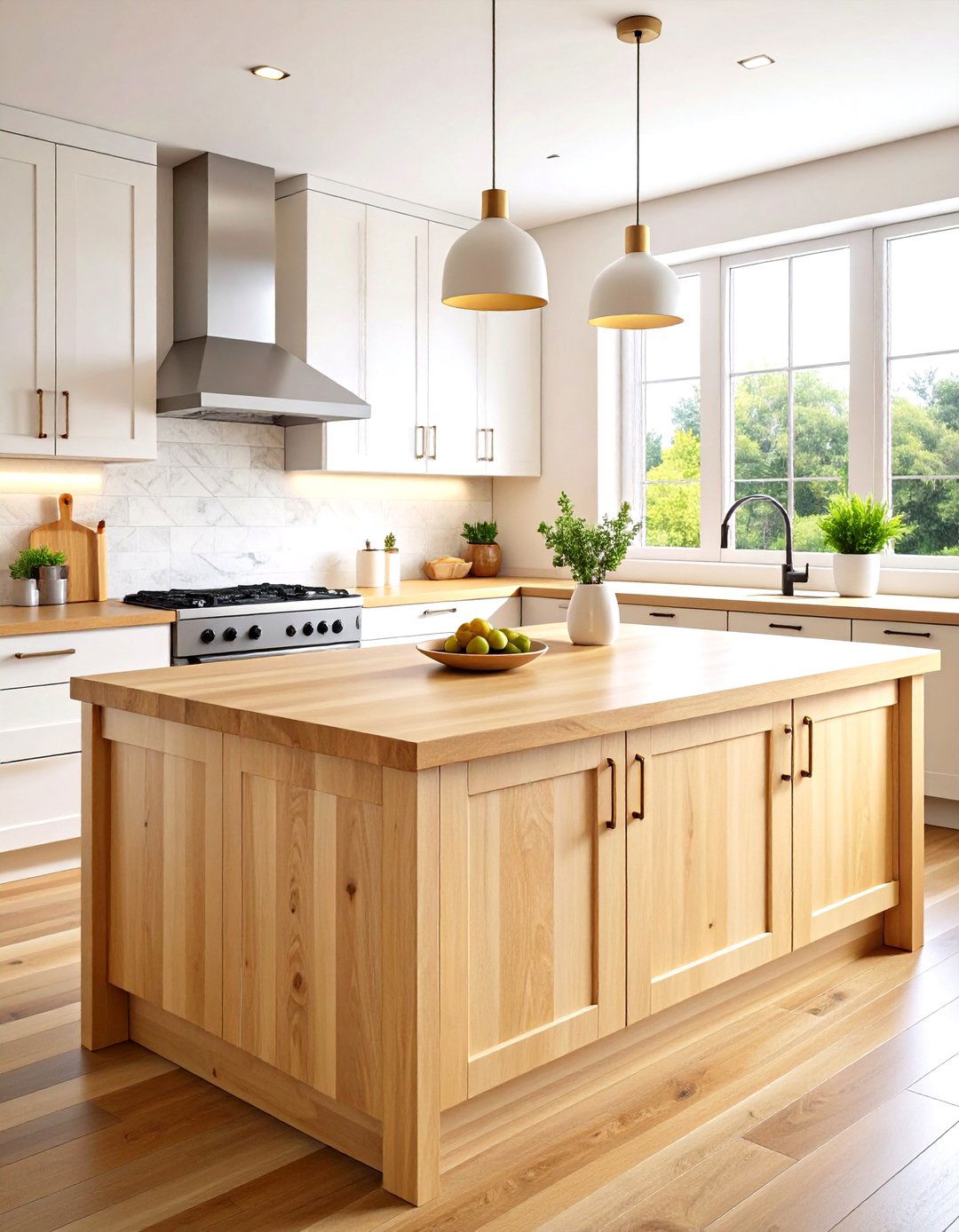
Among all wood species, hard maple stands as the gold standard for wood countertop construction. Maple is the most popular wood for kitchen countertops, prized for its hardness and solid nature. This dense hardwood features a light blonde coloration with tight, closed grain patterns that create a uniform appearance. Hard maple butcher block typically ranges from light blonde to cream coloration and works beautifully with white cabinets, dark countertops, and various kitchen styles from farmhouse to contemporary. The exceptional strength of maple makes it ideal for heavy-duty food preparation, while its naturally antibacterial properties provide added safety. Regular oiling maintains its pristine appearance, and its ability to be sanded and refinished ensures decades of reliable performance in busy kitchen environments.
2. Black Walnut Wood Countertop Luxury Surface
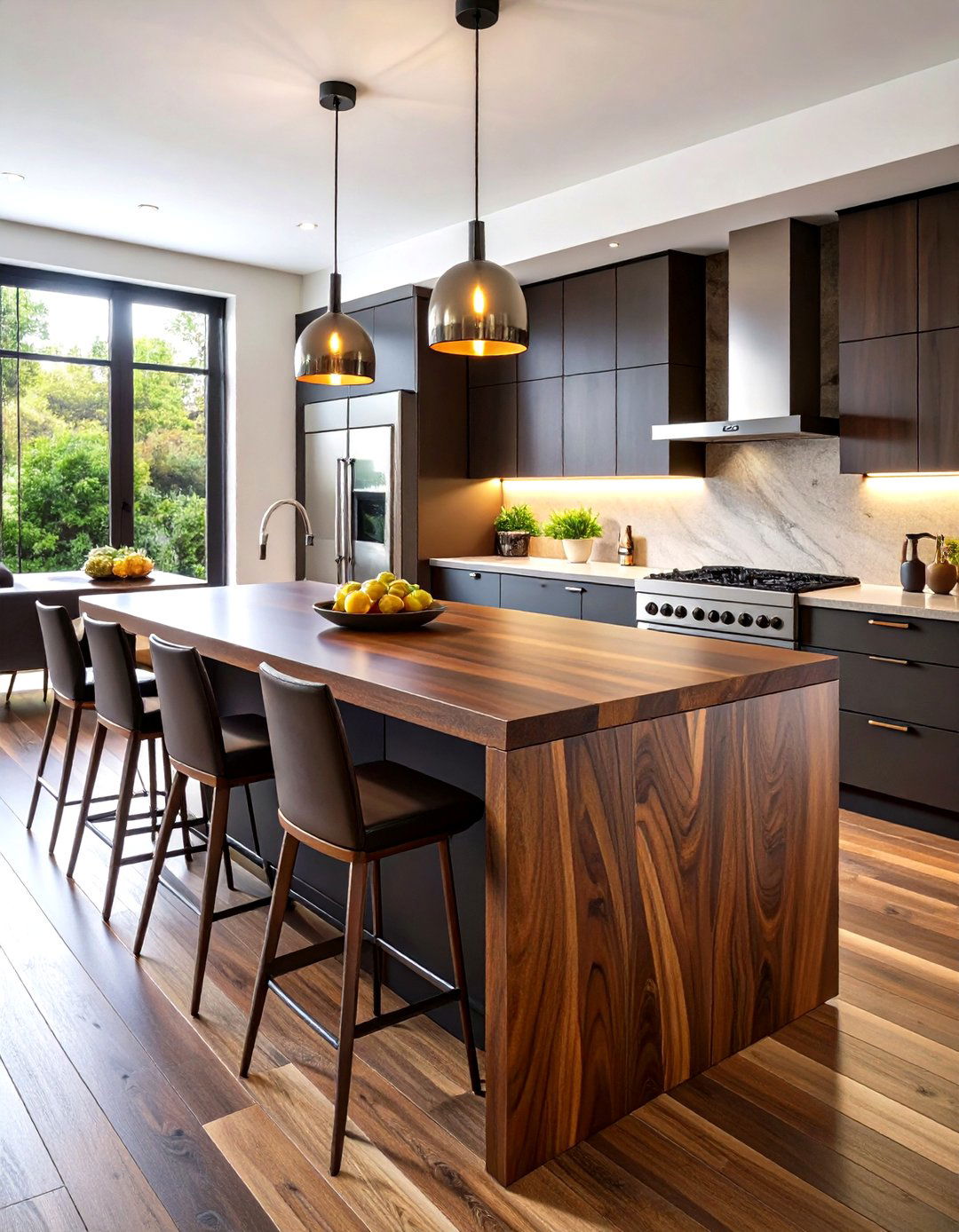
Black walnut wood countertops epitomize luxury and sophistication in kitchen design. Black walnut is easily one of the most revered woods used in home decor on account of its toughness and beautiful grain. This premium hardwood showcases rich chocolate colors with striking black grain patterns that create dramatic visual impact. American walnut is prized for its rich chocolate colors and striking black grain, making it perfect for an accent piece. The natural color variations range from honey cream sapwood to deep brown heartwood that develops purple undertones over time. The black walnut makes a luxurious-looking countertop because of its deep, dark color and tight grains, developing a smooth finish over time that adds to its expensive appearance. Despite its premium appearance, walnut requires minimal maintenance compared to other wood species.
3. Cherry Wood Countertop Traditional Elegance

Cherry wood countertops deliver timeless elegance with their distinctive red hues and smooth finish characteristics. Due to its rich coloration and artful grain patterns, people have been making furniture and household objects from cherry wood since the time of ancient Greeks and Romans. American cherry features subtle red coloring that deepens and darkens with age, creating an increasingly beautiful patina over time. Used in everything from butcher blocks to pianos, cherry's smooth and even finish brings with it a touch of sophistication. American cherry is known for its changing colors, appearing darker or redder over time, which creates nice contrast with white cabinetry. For maximum durability, Brazilian cherry (jatoba) offers superior hardness while maintaining the classic cherry aesthetic that complements traditional and transitional kitchen designs perfectly.
4. Oak Wood Countertop Classic Americana
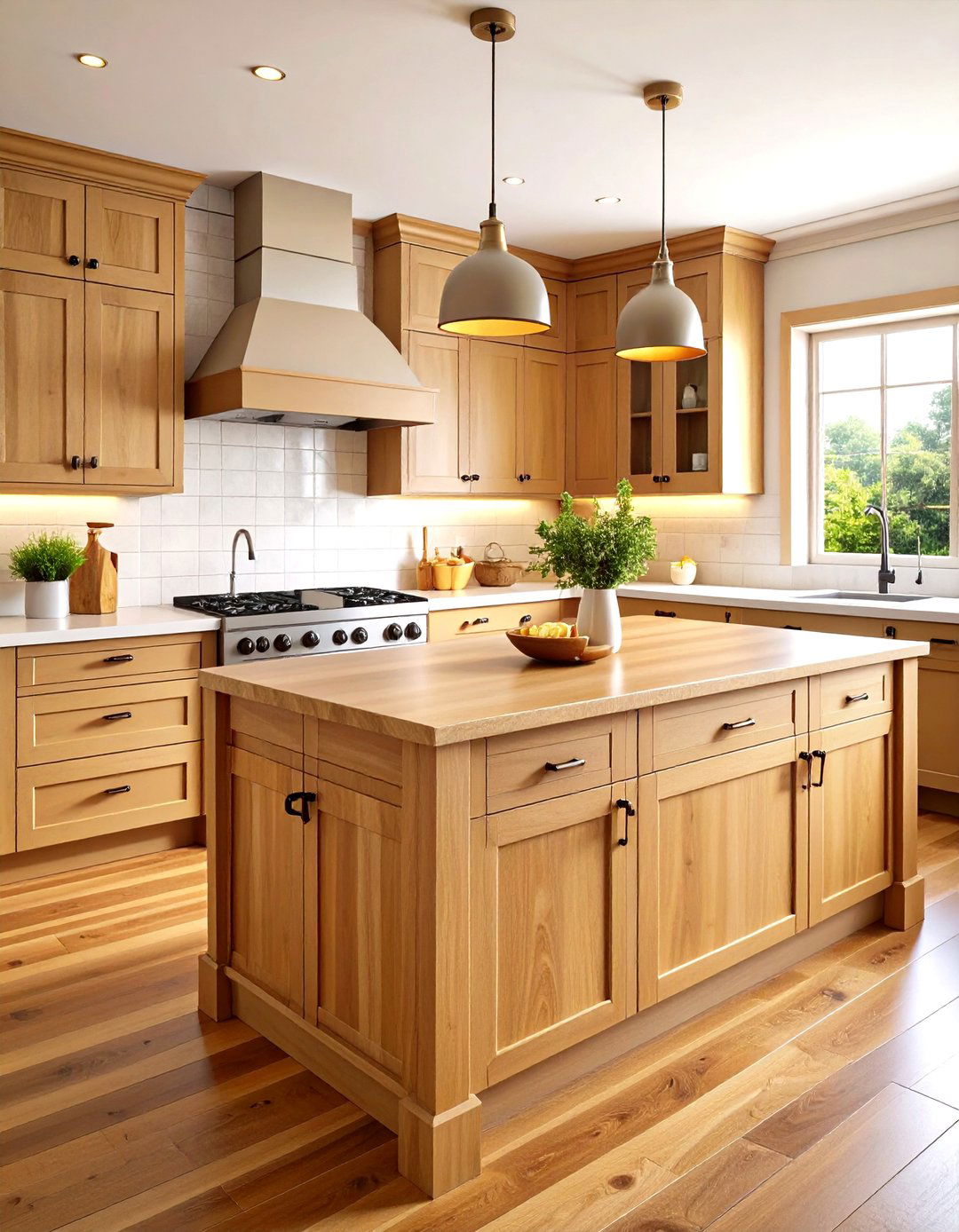
Oak wood countertops represent classic American craftsmanship with their prominent grain patterns and versatile coloring. Oak is a strong and solid wood with high resiliency and resistance to moisture, noted for having light to middle brown coloring with a cast of reddish hues. You'll find the heart of nature in every oak piece with its tan to light brown natural color and even true-grain flowing throughout the butcher block. White oak, particularly popular for its durability, features a Janka hardness score of 1,350, making it one of the hardest domestic hardwoods available. White oak's natural light color with blue/gray undertones complements a wide range of kitchen styles and colors. The open grain structure accepts stains beautifully, allowing customization to match any design scheme while providing exceptional longevity.
5. Bamboo Wood Countertop Sustainable Innovation

Bamboo wood countertops represent the pinnacle of sustainable kitchen design without compromising strength or beauty. Technically speaking, bamboo is a grass, not a tree, but bamboo material rates 1380 on the Janka wood hardness scale, making it harder than white oak. This rapidly renewable resource can be heat-treated to develop attractive caramel colors, offering modern kitchens a clean, contemporary aesthetic. Bamboo is one of the most rapidly renewing species on the planet, making it the eco-friendly choice, with style options ranging from sumptuous whole grain to edgier parquet designs. Bamboo only takes 3 to 4 years for a pole to be ready for harvesting, compared to decades for trees. The natural antibacterial properties and water resistance make bamboo ideal for kitchen environments while supporting environmental sustainability goals.
6. Teak Wood Countertop Marine-Grade Durability
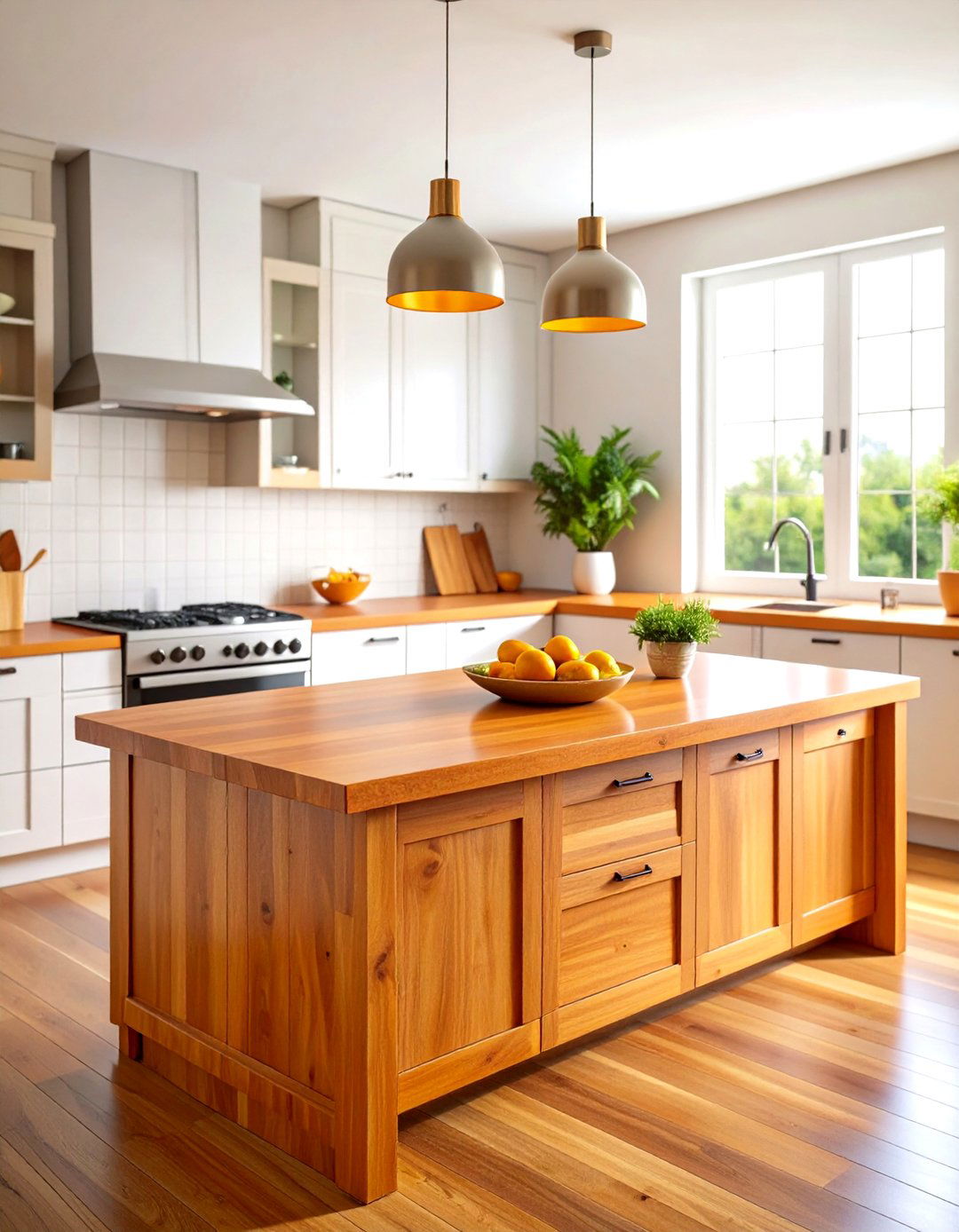
Teak wood countertops bring marine-grade durability and exotic beauty to sophisticated kitchen designs. Teak has long been prized for its toughness and water resistance, making it a wood of choice for boat building as well as outdoor patio furniture. This exceptional hardwood contains natural oils and compounds that provide inherent moisture resistance and antibacterial properties. Teak is known for its rich warm orange color, giving it an exotic look, and aside from its durability, it has high oil content making it more moisture resistant. Teak countertops can last for generations, as the wood does not warp, splinter, or crack, and resists the growth of mold and fungi as well as damage from termites. The naturally occurring protective properties mean teak requires minimal maintenance while delivering unmatched longevity and distinctive golden-brown coloration that enriches any kitchen space.
7. Live Edge Wood Countertop Natural Artistry
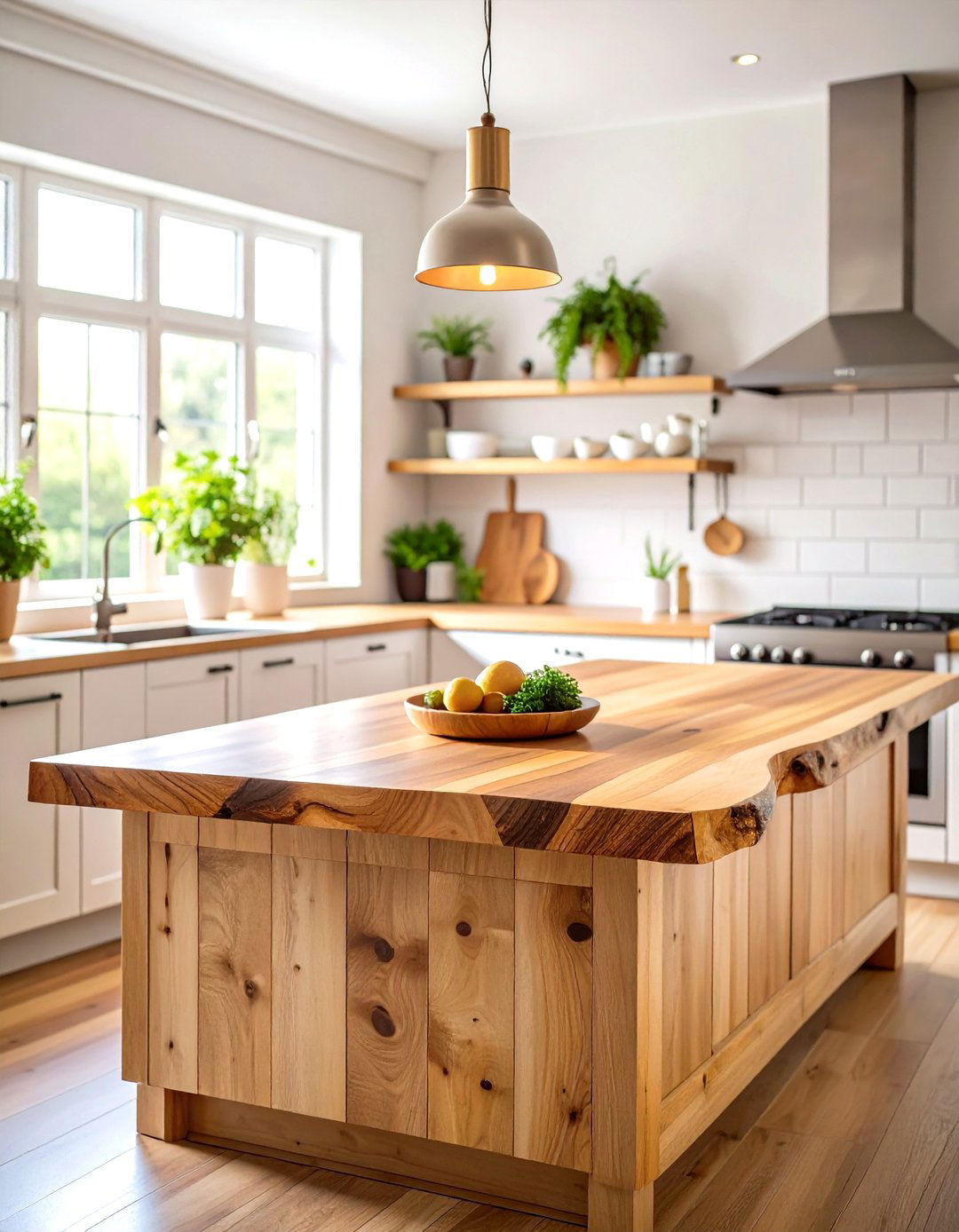
Live edge wood countertops showcase nature's raw artistry by preserving the tree's natural edge contours and organic beauty. Natural edges, also known as live edges, preserve the raw, organic outline of the stone, bringing a touch of nature into your kitchen with a rustic yet refined look. These unique surfaces feature the bark edge or natural curve of the tree, creating one-of-a-kind countertops with authentic character. While the front edge is rough, live-edge wood counters are typically sanded and finished to have a smooth upper surface, with some wood species appearing multi-dimensional thanks to knots and superficial cracks. Each live edge piece tells its own story through natural imperfections, grain patterns, and organic shapes that cannot be replicated. This style works exceptionally well as kitchen island centerpieces, breakfast bar tops, or accent surfaces where the natural edge creates stunning visual interest against more traditional elements.
8. Reclaimed Wood Countertop Historic Character
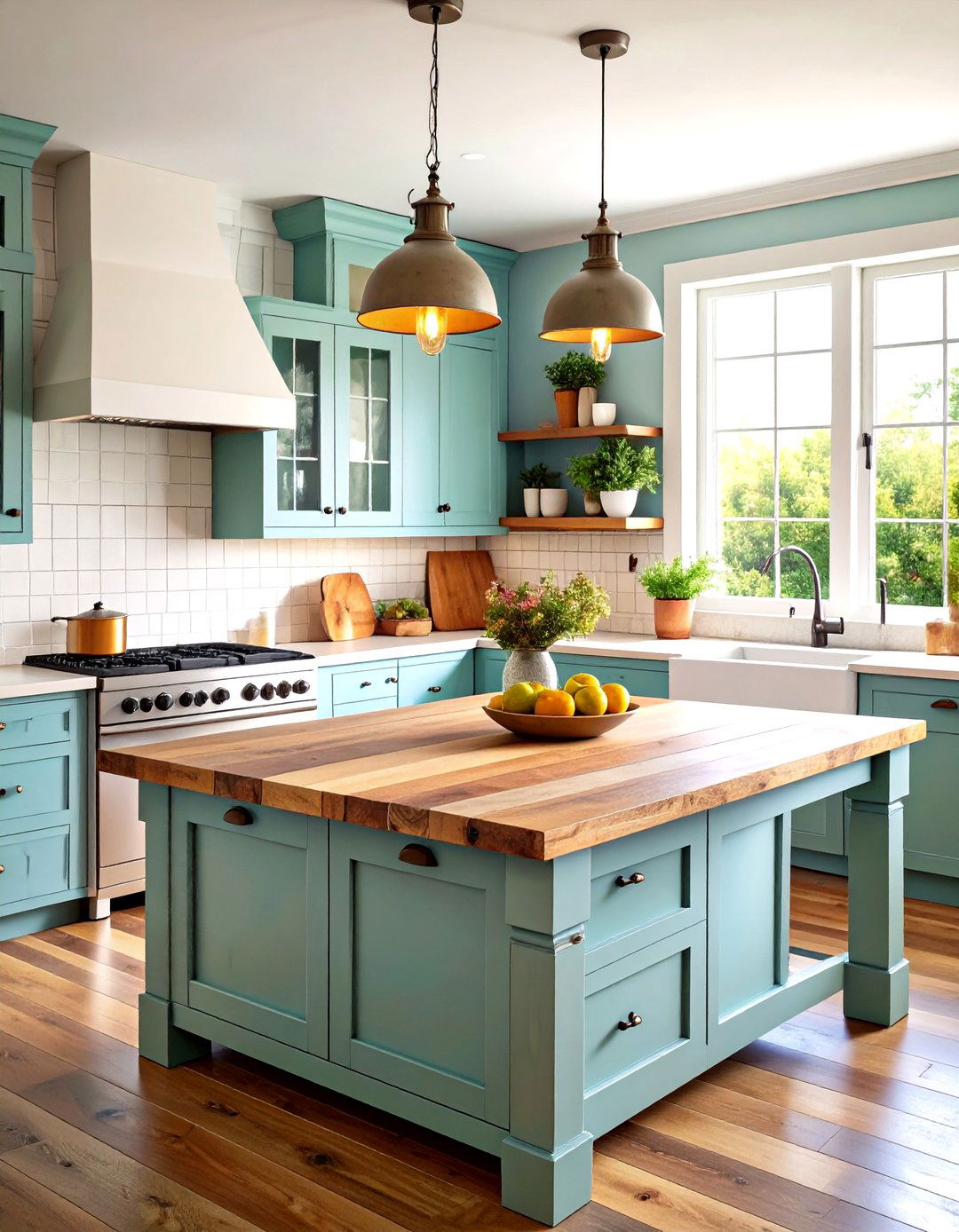
Reclaimed wood countertops infuse kitchens with sustainable character and historical significance through repurposed lumber. Reclaimed wood is lumber with a "past life," often salvaged from old buildings, pallets, fences, or furniture, with heart pine salvaged from 19th-century textile mills being particularly popular. Reclaimed wood countertops, salvaged from barns or industrial buildings, add warmth, character, and history—perfect as kitchen islands or accent pieces. These environmentally conscious surfaces showcase unique patina, weathering, and grain patterns that new lumber cannot replicate. It's possible to create DIY wood countertops with reclaimed materials that look brand new with elbow grease and tung oil. Each piece carries distinct markings from its previous life, including nail holes, saw marks, and natural aging that creates authentic vintage appeal while supporting sustainable building practices.
9. Waterfall Wood Countertop Modern Statement
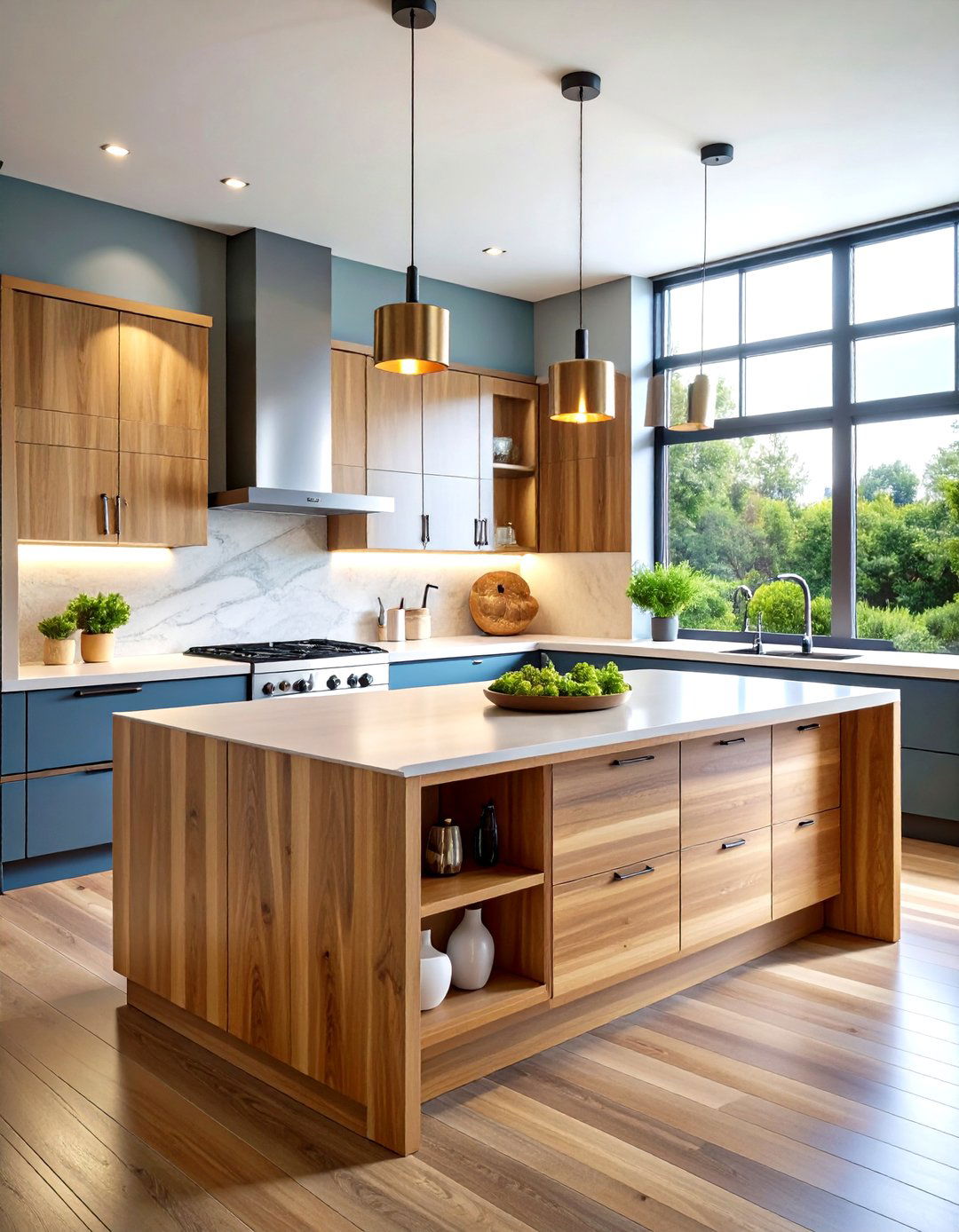
Waterfall wood countertops create dramatic modern statements by extending countertop material vertically down cabinet sides to the floor. Waterfall countertops extend vertically down the sides of the island or cabinetry, creating a seamless, continuous look that is sophisticated and timeless. Rather than coming to an abrupt stop, this style of countertop ends in a right-angle reaching down to the floor, most commonly used for finishing off kitchen islands or breakfast bars. This contemporary design technique showcases beautiful wood grain patterns continuously around corners, emphasizing the material's natural beauty. The waterfall edge provides both aesthetic appeal and practical protection for cabinet surfaces from daily wear, spills, and scuffs. Waterfall edges create sleek, continuous visual flow and act as architectural focal points in open-concept spaces, visually connecting kitchen and living areas. This design works exceptionally well with striking wood species like walnut or live-edge pieces.
10. Mixed Material Wood Countertop Creative Contrast

Mixed material wood countertops combine different surfaces strategically throughout the kitchen for both aesthetic appeal and functional optimization. Clients are increasingly interested in mixed-material applications: pairing stone with butcher block or stainless for a truly custom, culinary feel. This design approach allows homeowners to utilize wood's warmth and cutting-friendly properties alongside stone's durability and heat resistance. Custom mixed-material designs combine granite and wood for statement furniture or island features, enhancing functionality while allowing homeowners to create bespoke kitchen setups. A mahogany slab treated with food-safe finish adds warmth and texture to islands while perimeter cabinets are topped with white quartz for sleek, durable finish. Different kitchen zones serve different purposes, and materials can reflect that reality through thoughtful combination of wood prep areas with stone serving zones.
11. End-Grain Wood Countertop Butcher Block Strength
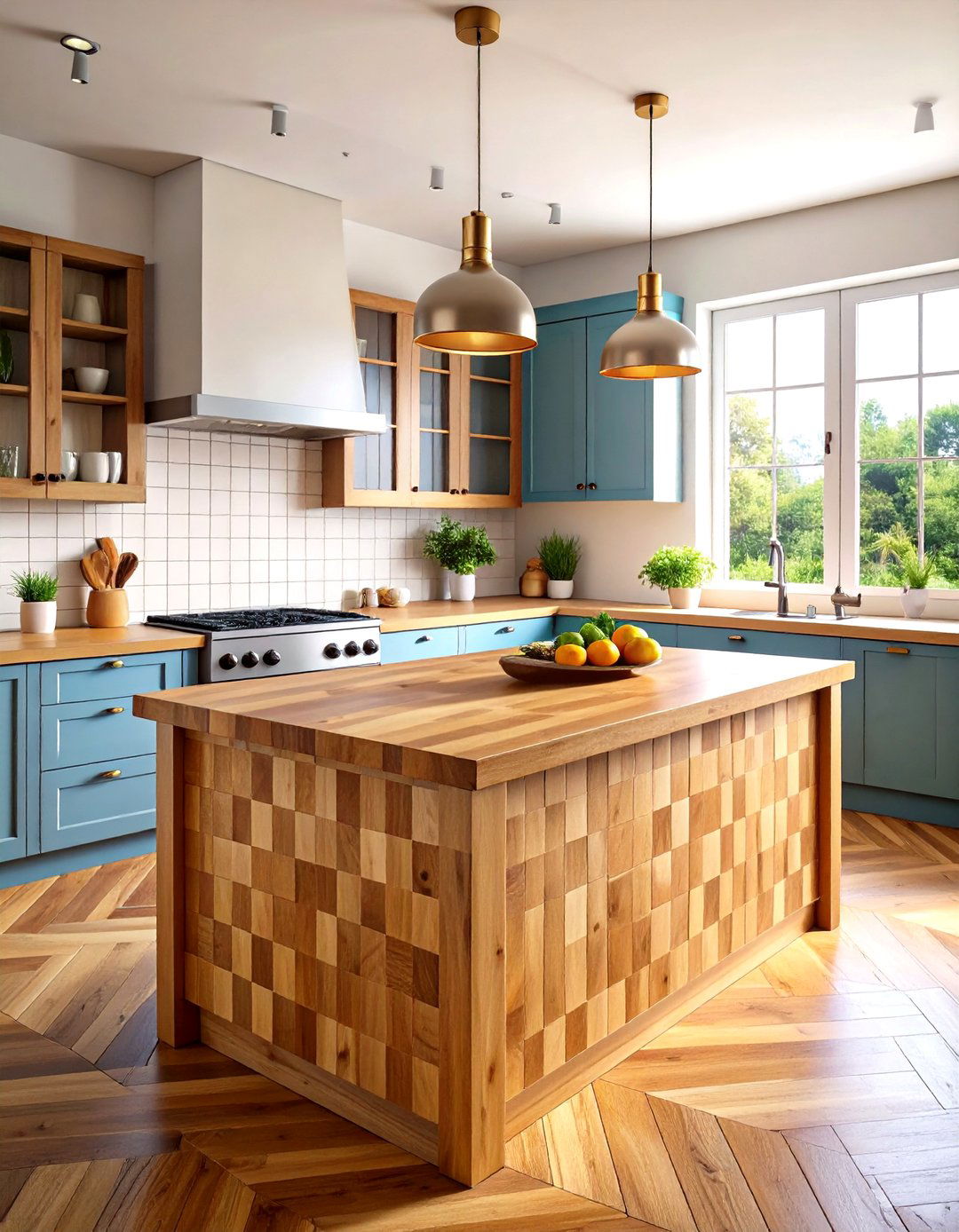
End-grain wood countertops represent the strongest and most durable butcher block construction method available for serious cooking environments. End-grain surfaces are noted for their "checkerboard"-esque appearance, created by combining pieces of wood vertically, allowing the ends to be on full display. This construction method positions wood fibers vertically, creating surfaces that are gentler on knife edges while providing superior durability. Blocks of end-grain maple are glued together to form a grid pattern, creating the strongest butcher-block construction available. End-grain is the most expensive method of construction due to how many individual pieces of wood are being used, but thanks to their compact construction, end-grain surfaces are the strongest and most durable. The unique grain orientation allows knives to slip between wood fibers rather than cutting across them, maintaining both the cutting surface and blade sharpness longer than other configurations.
12. Edge-Grain Wood Countertop Budget-Friendly Option
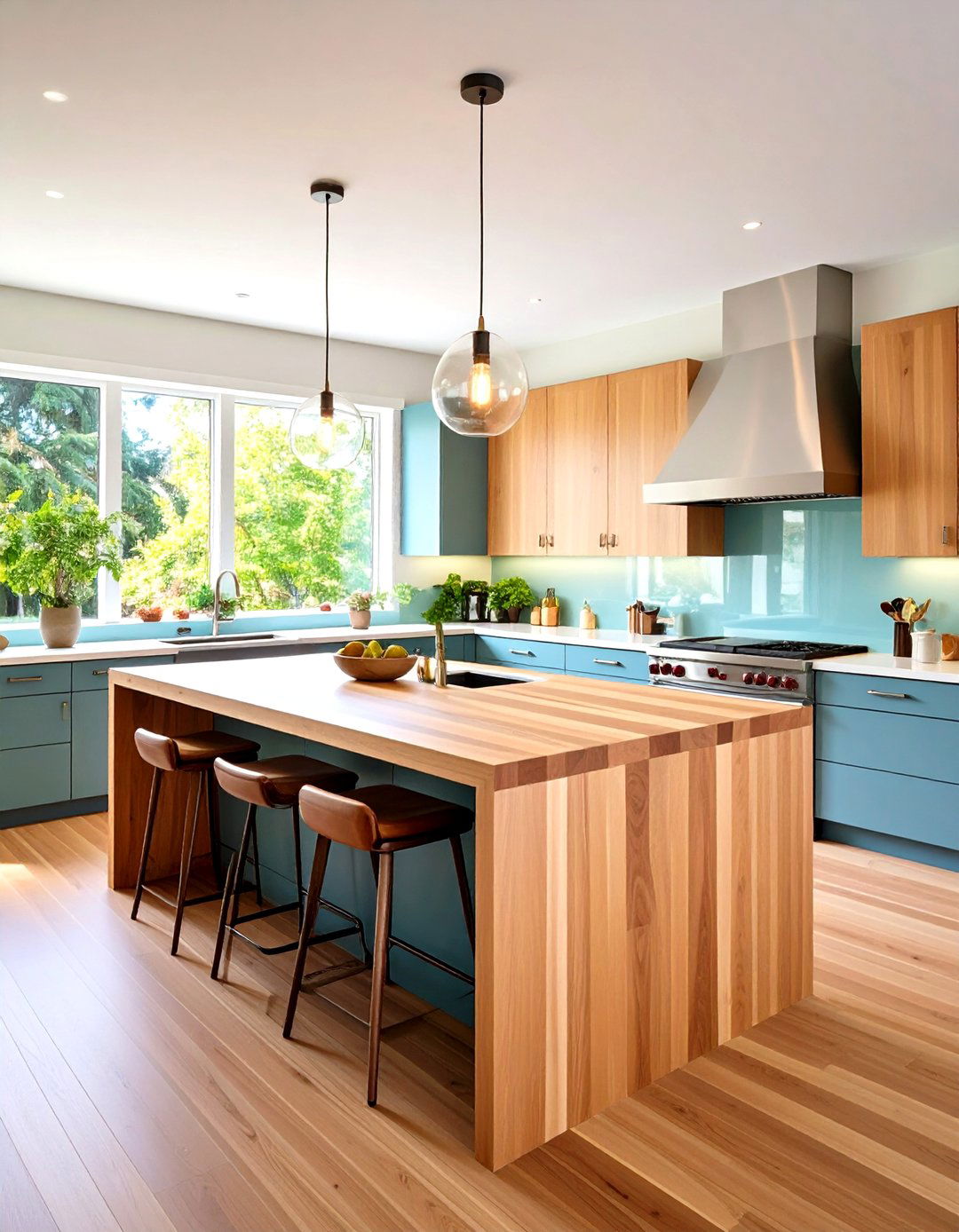
Edge-grain wood countertops offer the most budget-friendly butcher block construction while maintaining excellent durability and visual appeal. Edge-grain is the most affordable option, made by attaching straight cuts of wood parallel to one another with their edges exposed. Edge grain is the side of the wood board, with boards cut into strips, turned on their sides, and connected together, available in thicknesses from 1.5" to 6" thick. This construction method creates beautiful linear grain patterns that showcase wood's natural beauty while providing excellent functionality for daily kitchen use. The continuous grain lines create sophisticated visual flow that complements both traditional and contemporary kitchen designs. Edge-grain surfaces offer good durability for general kitchen tasks while remaining accessible to budget-conscious homeowners who want natural wood beauty. Regular maintenance with food-safe oils preserves the surface and enhances the wood's natural character over time.
13. Face-Grain Wood Countertop Furniture-Quality Finish
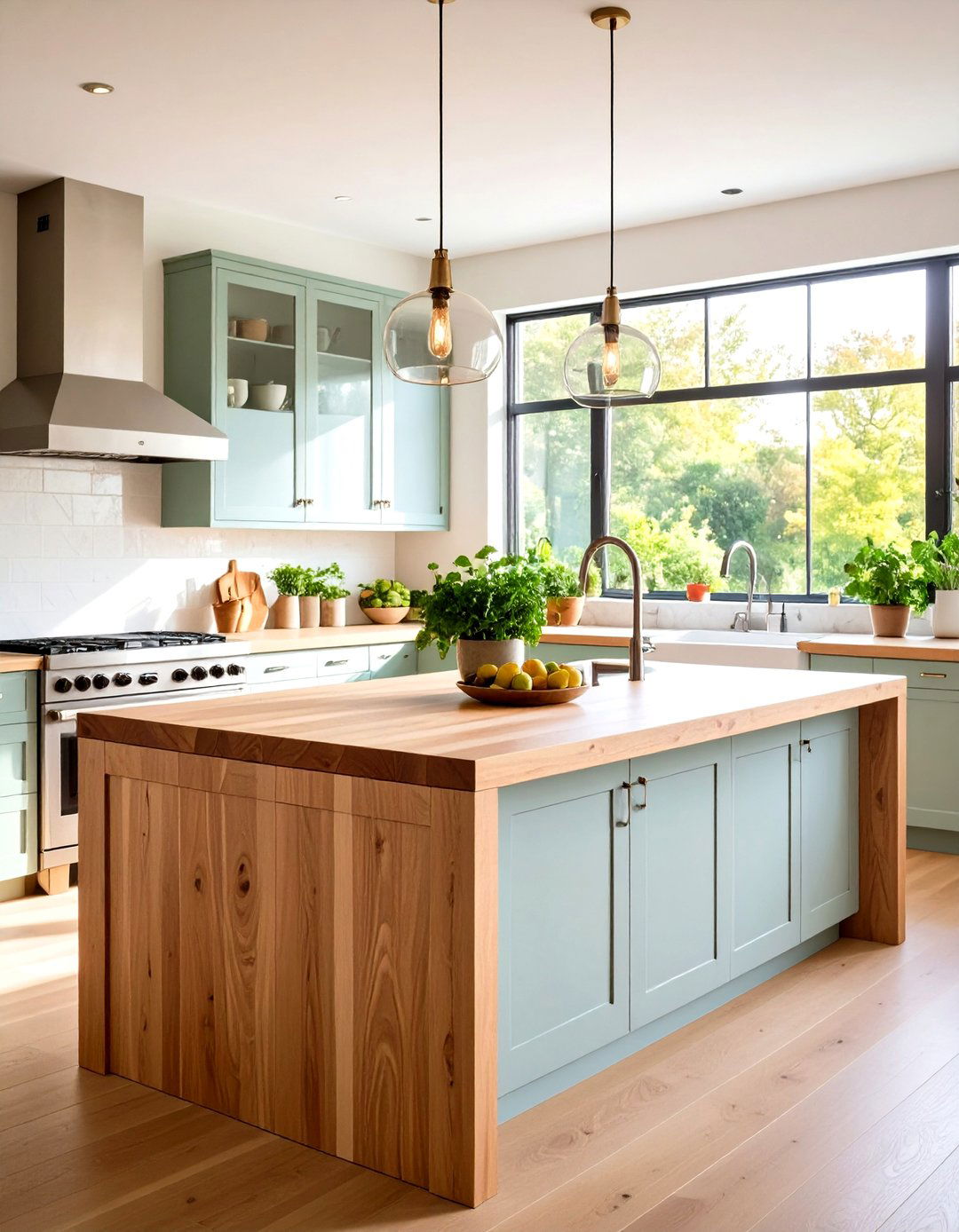
Face-grain wood countertops deliver furniture-quality finishes that emphasize wood's natural beauty over functional cutting capabilities. Face-grain surfaces show the natural face of the wood board, creating beautiful wide grain patterns but are not ideal for cutting blocks. This construction method showcases the wood's most attractive grain patterns and color variations in wide, uninterrupted displays. Face-grain countertops work exceptionally well as accent pieces, breakfast bars, or decorative surfaces where visual impact takes precedence over heavy-duty food preparation. A solid wood countertop using face grain of solid cherry with light oil finish adds beauty to spaces, though it's not ideal for cutting blocks. The smooth, wide grain surfaces accept stains and finishes beautifully, allowing customization to match specific design schemes. These surfaces require less maintenance than cutting-friendly alternatives while providing elegant focal points that highlight wood's inherent beauty and natural character.
14. Acacia Wood Countertop Distinctive Grain Patterns
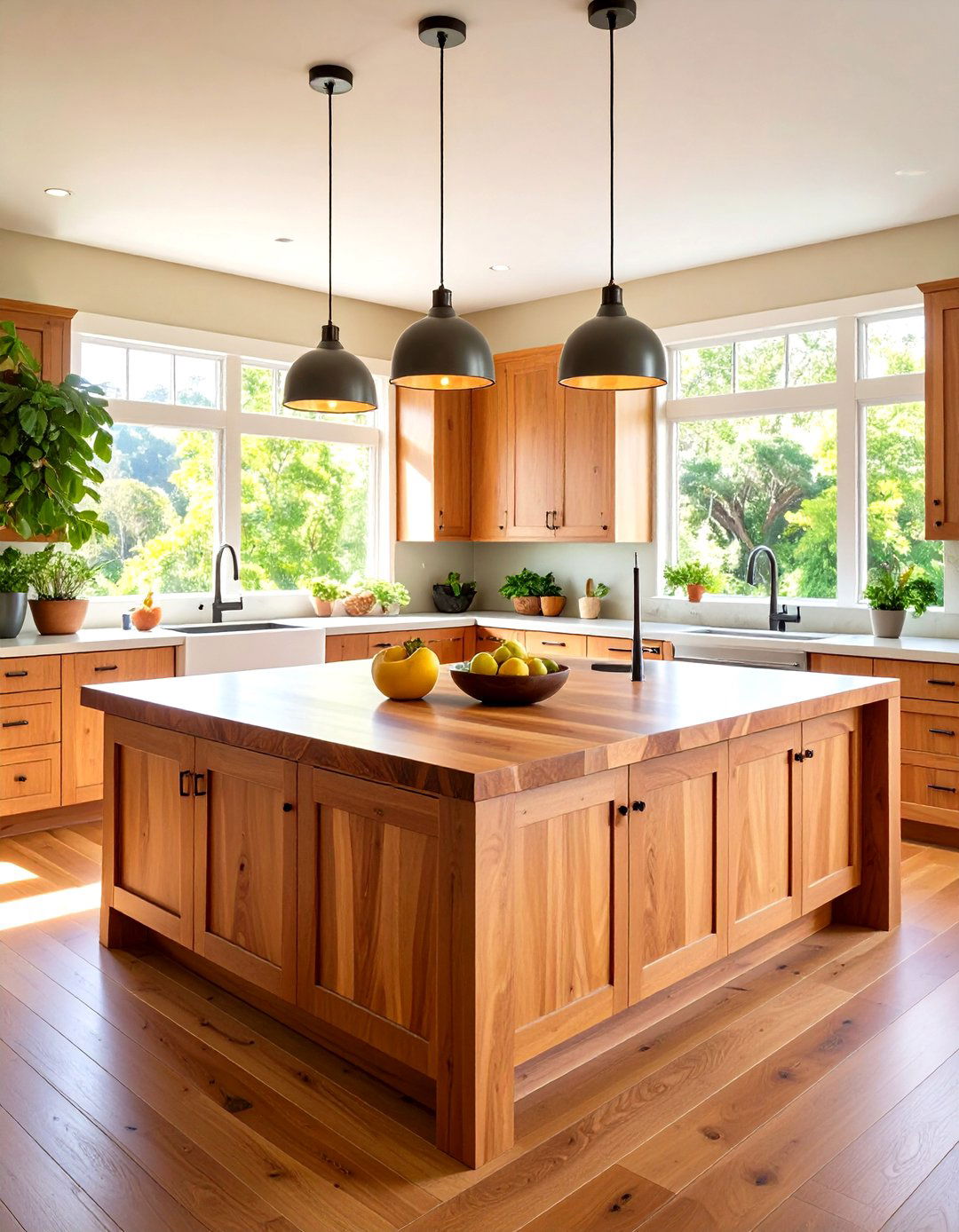
Acacia wood countertops showcase distinctive grain patterns and natural water resistance ideal for kitchen environments. Acacia features rich beauty with grain patterns only Mother Nature could create, with color variety staying in medium shades in its natural state with darker accents throughout. This exotic hardwood species offers unique grain patterns that cannot be replicated, ensuring each countertop becomes a one-of-a-kind design element. Acacia wood is naturally waterproof and resistant to molds and termites, making it ideal for damp environments like kitchens. The stunning grain patterns add personality to kitchen designs while providing practical benefits through natural moisture resistance. Acacia is straightforward to work with, allowing creation of unique and memorable countertop designs, and using acacia wood won't affect the environment much due to quick growth. This sustainable choice combines environmental responsibility with exceptional beauty and practical performance for discerning homeowners.
15. Birch Wood Countertop Light Contemporary Appeal
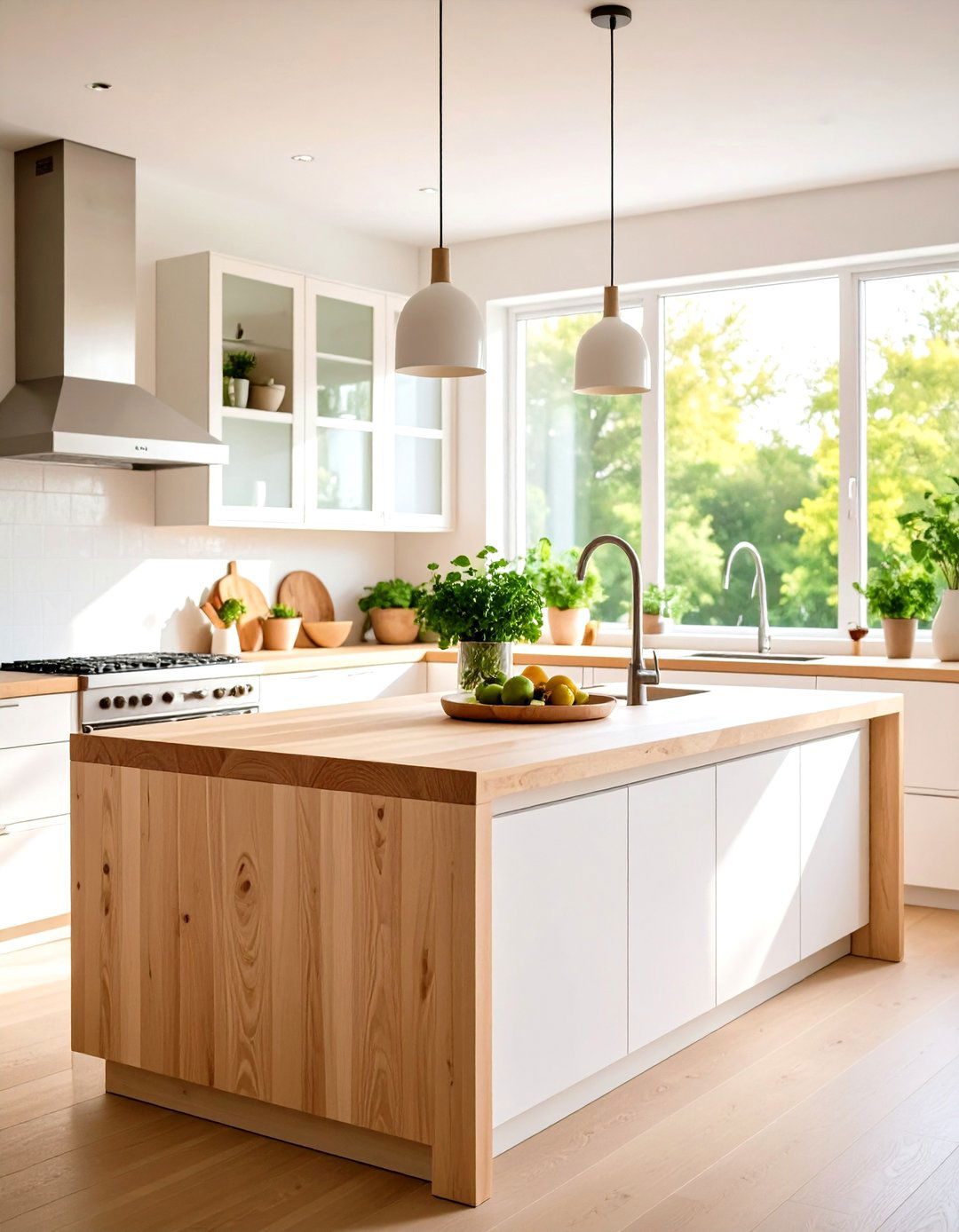
Birch wood countertops provide light, contemporary appeal with fine grain patterns perfect for modern kitchen aesthetics. Birch is pale and warm-toned with a fine grain and affordable price, fine-grained and pale in color with a satin-like sheen that darkens with age. This domestic hardwood features subtle color variations and close grain structure that creates lovely effects in butcher block applications. In contemporary kitchens, the light and airy look of birch wood countertops fits right in with the modern aesthetic. Birch often has knots or heartwood in cream or light brown which gives countertops unique and distinct natural looks. The Janka rating of 1,260 provides adequate hardness for kitchen use while remaining more affordable than premium species. Birch is an ideal wood for butcher block style countertops and is a less expensive choice than some other woods typically used. Regular oiling maintains its light appearance and protects against moisture damage in busy kitchen environments.
16. Mesquite Wood Countertop Southwestern Character
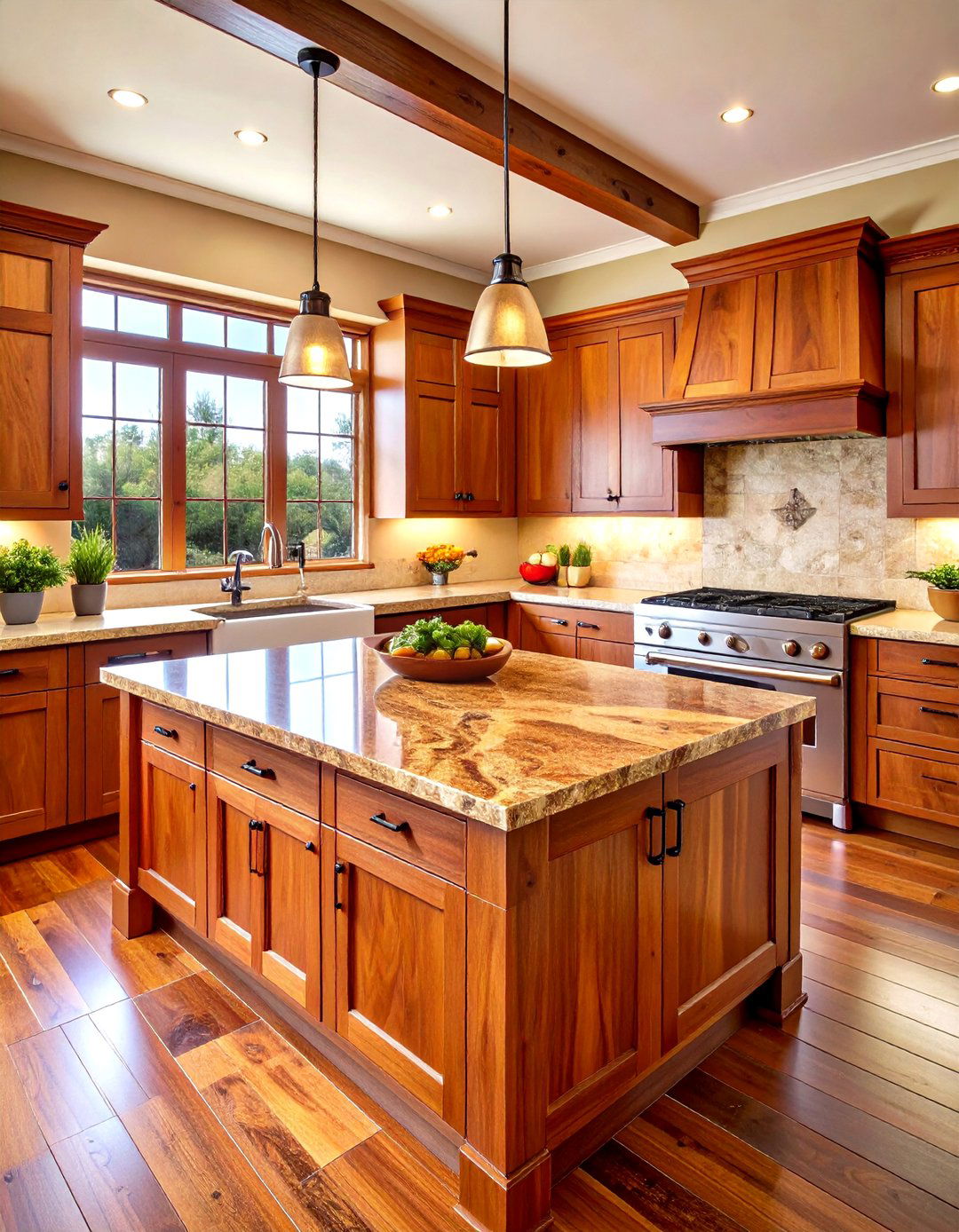
Mesquite wood countertops bring distinctive Southwestern character with exceptional durability and unique mineral streaking patterns. Mesquite features mineral streaks that add character to reddish-brown strips on this exceptionally hard and durable domestic wood. This hardy species grows in arid regions, developing dense, durable wood with distinctive grain patterns and natural color variations. The mineral deposits create striking streaks and patterns that make each piece unique while providing conversation-starting focal points in kitchen designs. Mesquite's exceptional hardness ensures long-lasting performance under heavy use, while the warm reddish-brown tones complement Southwestern, rustic, and eclectic design schemes beautifully. The natural character marks, including mineral streaks and occasional knots, add authentic charm that cannot be replicated in manufactured materials. This domestic species supports local forestry while delivering exotic-looking results that enhance kitchen designs with distinctive American character and proven durability.
17. Iroko Wood Countertop African Golden Beauty
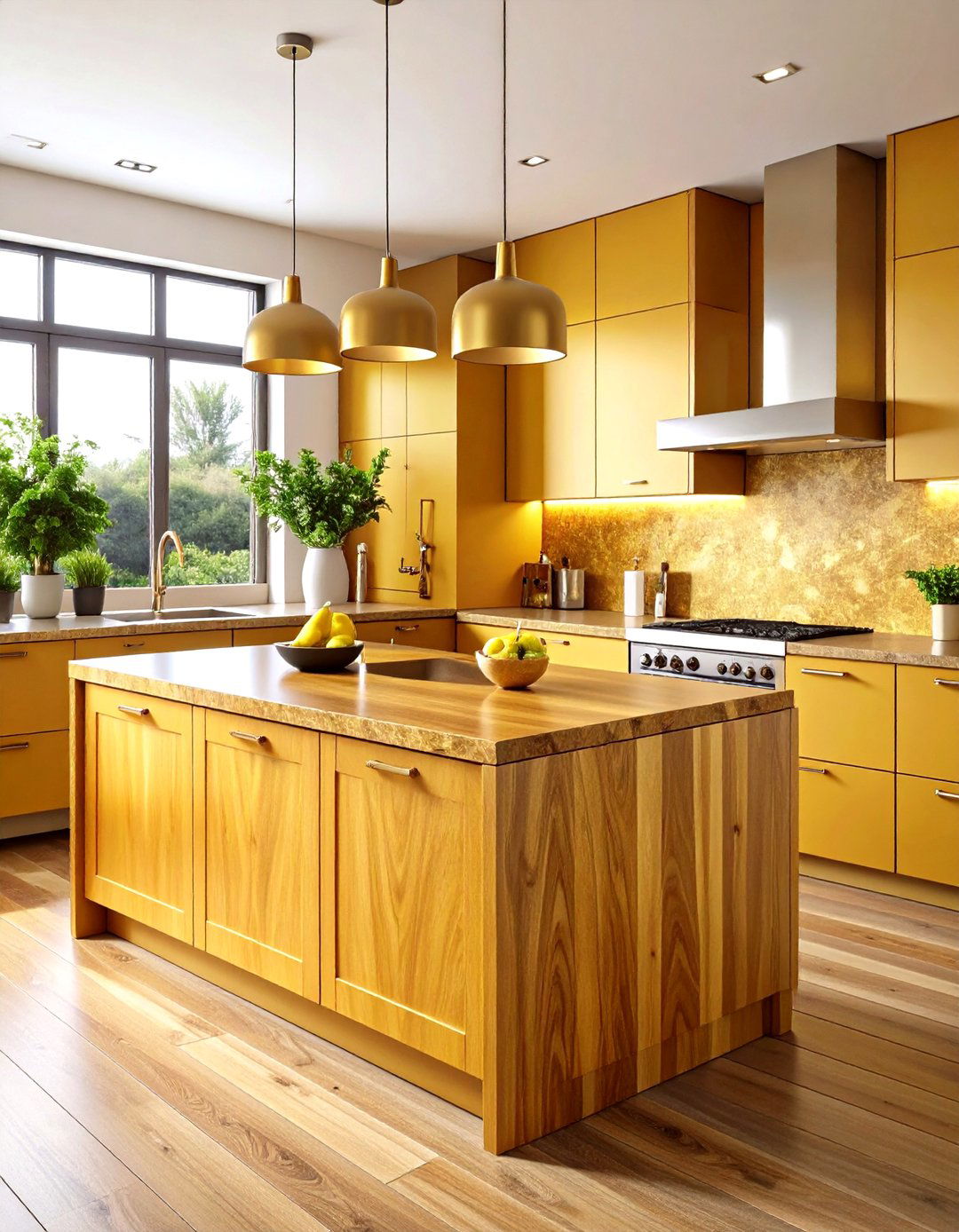
Iroko wood countertops showcase African golden beauty with exceptional weather resistance and naturally evolving color characteristics. Iroko is an African import that creates bright gold boards that mellow over time to a teak-like brown and resists insects, harsh weather, and decay. This exotic hardwood begins with bright golden tones that gradually develop into rich, teak-like brown coloration through natural aging processes. Iroko wood creates countertops with rich color and fancy edge profiles that look at home with marble backsplashes and copper ranges. The natural resistance to insects, moisture, and decay makes iroko exceptionally suitable for kitchen environments where durability is paramount. This species requires minimal maintenance while providing evolving beauty that improves with age and use. The combination of initial golden brilliance and eventual teak-like maturity offers homeowners countertops that transform beautifully over time, creating living surfaces that grow more attractive with each passing year.
18. Jatoba Wood Countertop Brazilian Cherry Hardness
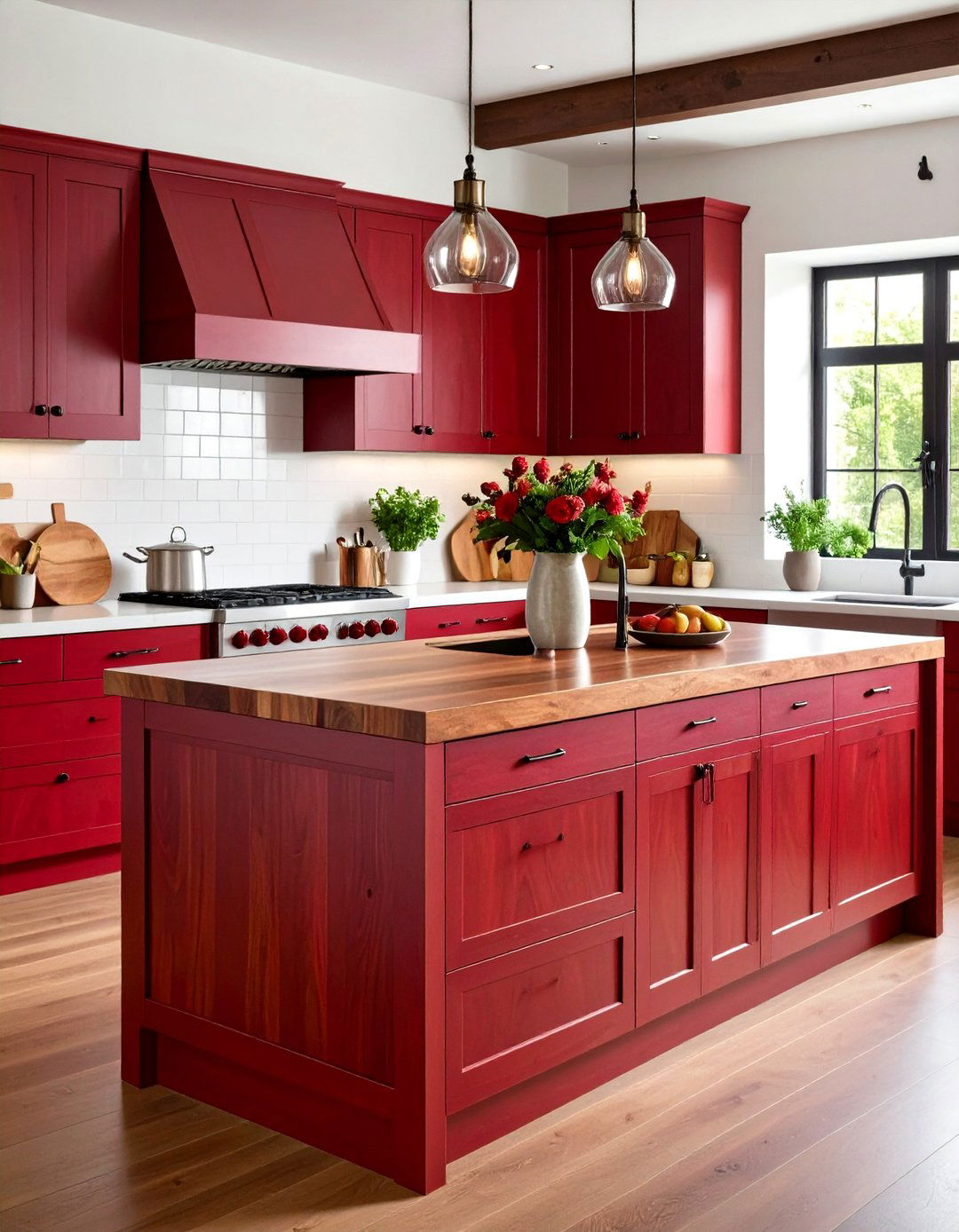
Jatoba wood countertops, known as Brazilian cherry, provide exceptional hardness and deep red coloration for premium kitchen installations. Jatoba, also known as Brazilian cherry, is exotic wood with deep-red hues and fine grain that is the hardest of woods available. This South American species delivers striking reddish-brown coloration with fine, even grain patterns that create sophisticated visual appeal. Brazilian cherry scores a hardness rating of 2,820, making it one of the toughest woods available and a better choice than American cherry for kitchen countertops. The exceptional density provides superior resistance to dents, scratches, and daily kitchen wear while maintaining beautiful appearance under heavy use. The deep red hues develop greater richness over time, creating increasingly beautiful surfaces that enhance kitchen designs with exotic appeal. Despite its premium appearance and performance, jatoba offers good value compared to other exotic species while delivering unmatched durability and distinctive South American character.
19. Hickory Wood Countertop Rustic Strength
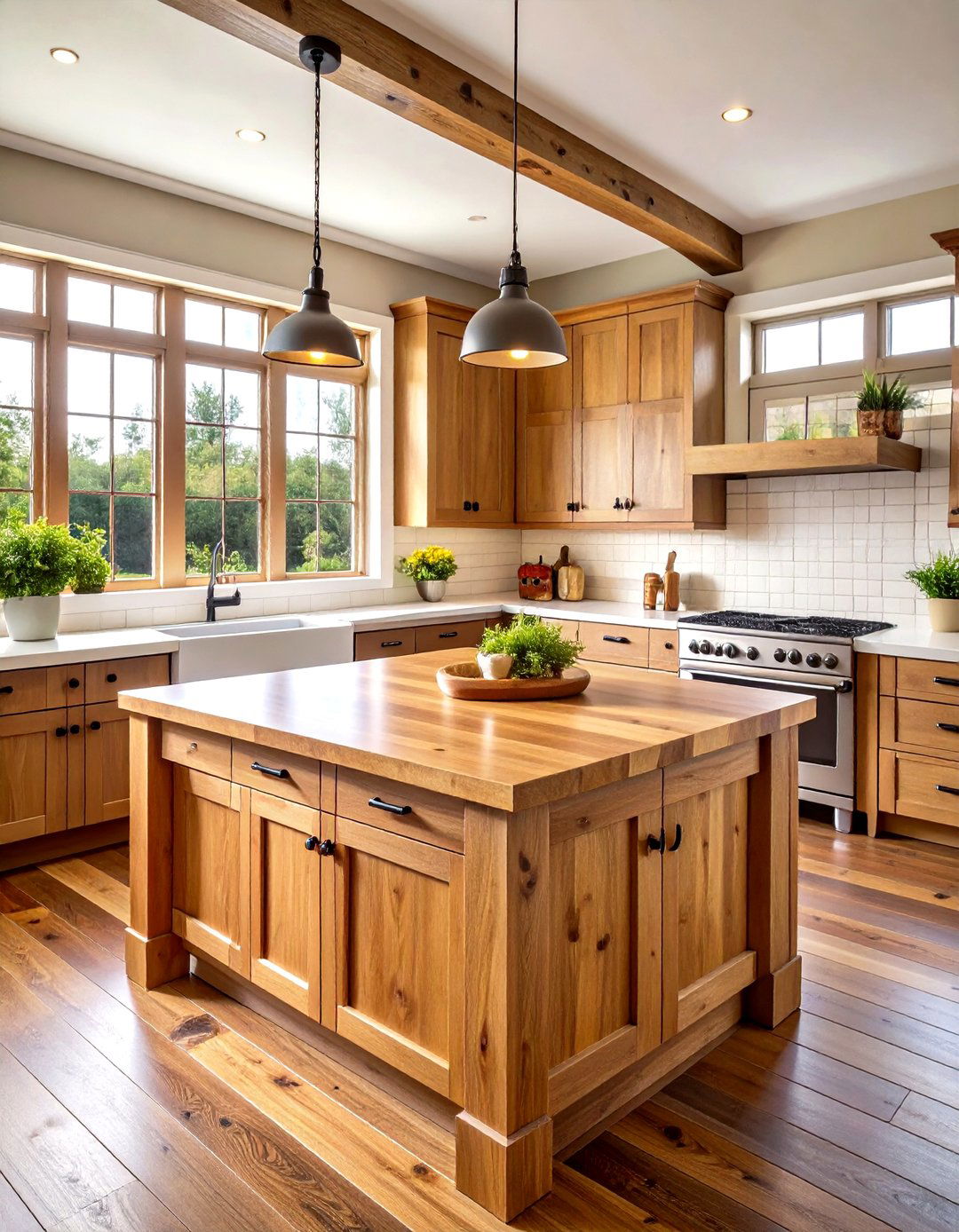
Hickory wood countertops combine rustic strength with distinctive grain patterns ideal for country and farmhouse kitchen designs. Hickory is among the wood species particularly well suited for butcher block use, being very hard and dense to resist scratching and denting. This North American hardwood features pronounced grain patterns with significant color variation that creates dynamic visual interest throughout the surface. The natural color ranges from light sapwood to darker heartwood, often within the same board, creating authentic rustic character that complements farmhouse aesthetics perfectly. Hickory's exceptional strength and density provide excellent durability for heavy-duty kitchen use while requiring minimal maintenance beyond regular oiling. Hickory is among the popular options offered by quality manufacturers, noted for its beauty, warmth, and practical performance in kitchen environments. The distinctive grain patterns and natural color variations ensure each hickory countertop becomes a unique focal point that enhances country-style kitchen designs with authentic American character.
20. Zebrawood Countertop Exotic Striped Drama
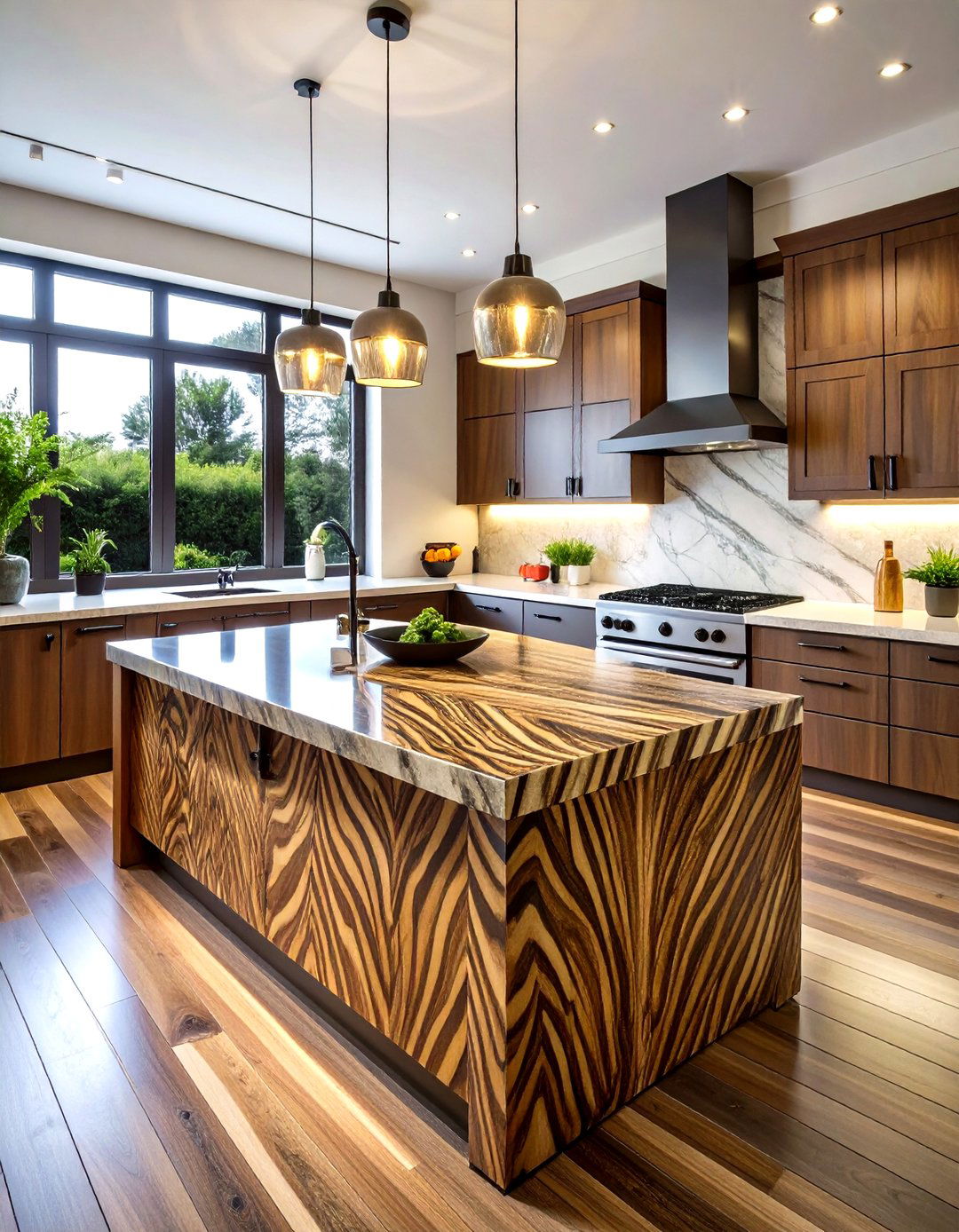
Zebrawood countertops create exotic striped drama with unmistakable visual impact and exceptional durability for statement kitchen designs. Zebrawood is known for its striking stripes/patterns reminiscent of its namesake, aptly named for its striking stripes and commonly used as home accent. This African hardwood showcases dramatic alternating light and dark stripes that create bold patterns impossible to replicate with other materials. This beauty is also a beast that will stand up against almost anything you throw at it, all while adding an unmistakable 'wow' factor to your kitchen. The extraordinary grain patterns make zebrawood ideal for feature installations where visual impact takes precedence, such as kitchen islands, breakfast bars, or accent surfaces. Aside from the very exotic appeal it gives, zebrawood is also known to be very durable. Each piece displays unique striping patterns that create conversation-starting focal points while providing practical performance for daily kitchen use.
Conclusion:
Wood countertops offer unparalleled versatility, combining natural beauty with practical functionality across diverse design styles and budgets. From budget-friendly maple butcher blocks to exotic zebrawood statement pieces, these organic surfaces provide sustainable alternatives to manufactured materials while delivering lasting durability. With proper care including regular oiling and maintenance, wood countertops can last for decades while developing character and patina that enhances their appeal over time. Whether you choose classic American hardwoods or exotic international species, wood countertops bring warmth, character, and timeless appeal that transforms kitchens into inviting culinary spaces. The 20 options presented here demonstrate wood's remarkable ability to complement any design vision while supporting environmental sustainability and authentic craftsmanship.



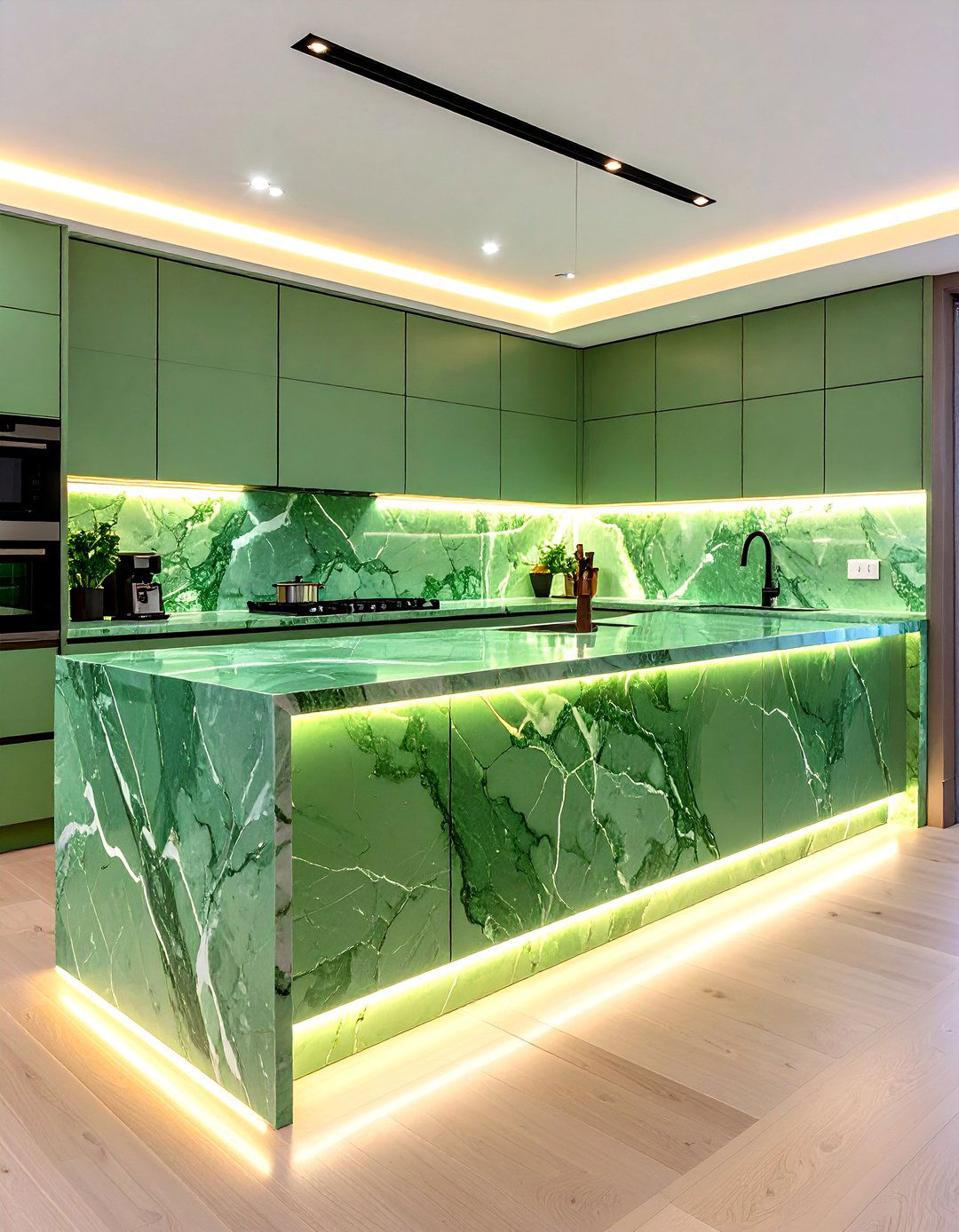
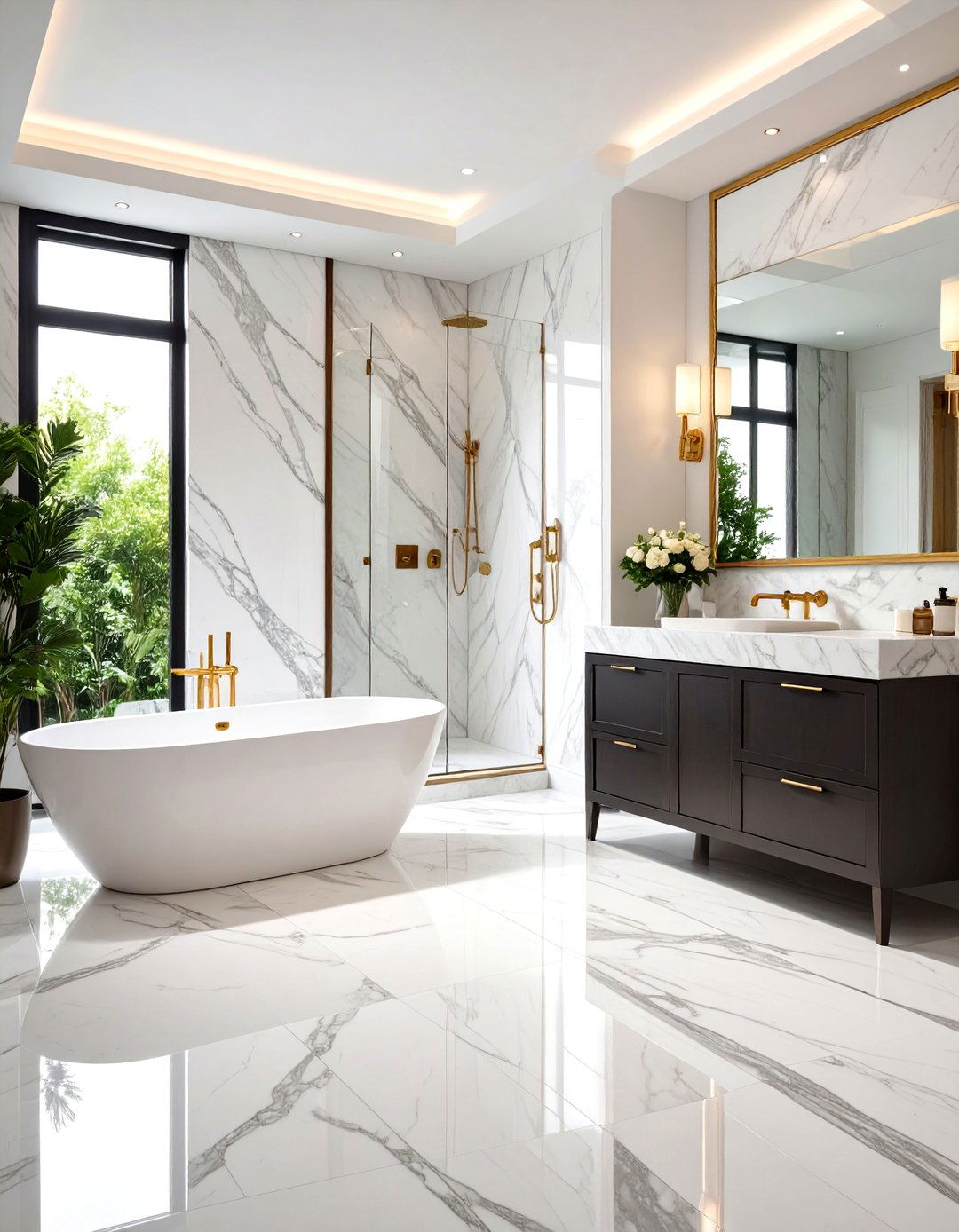
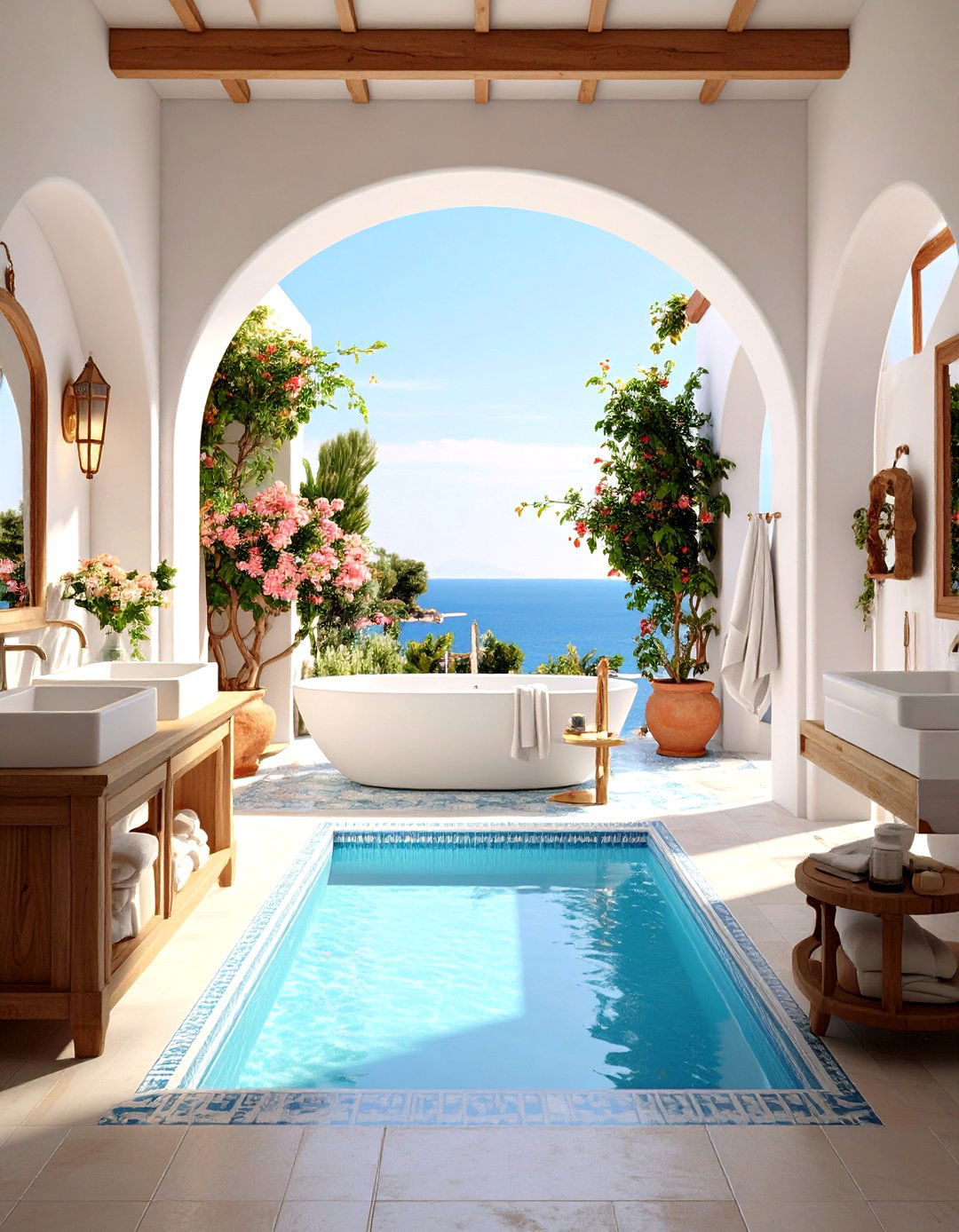
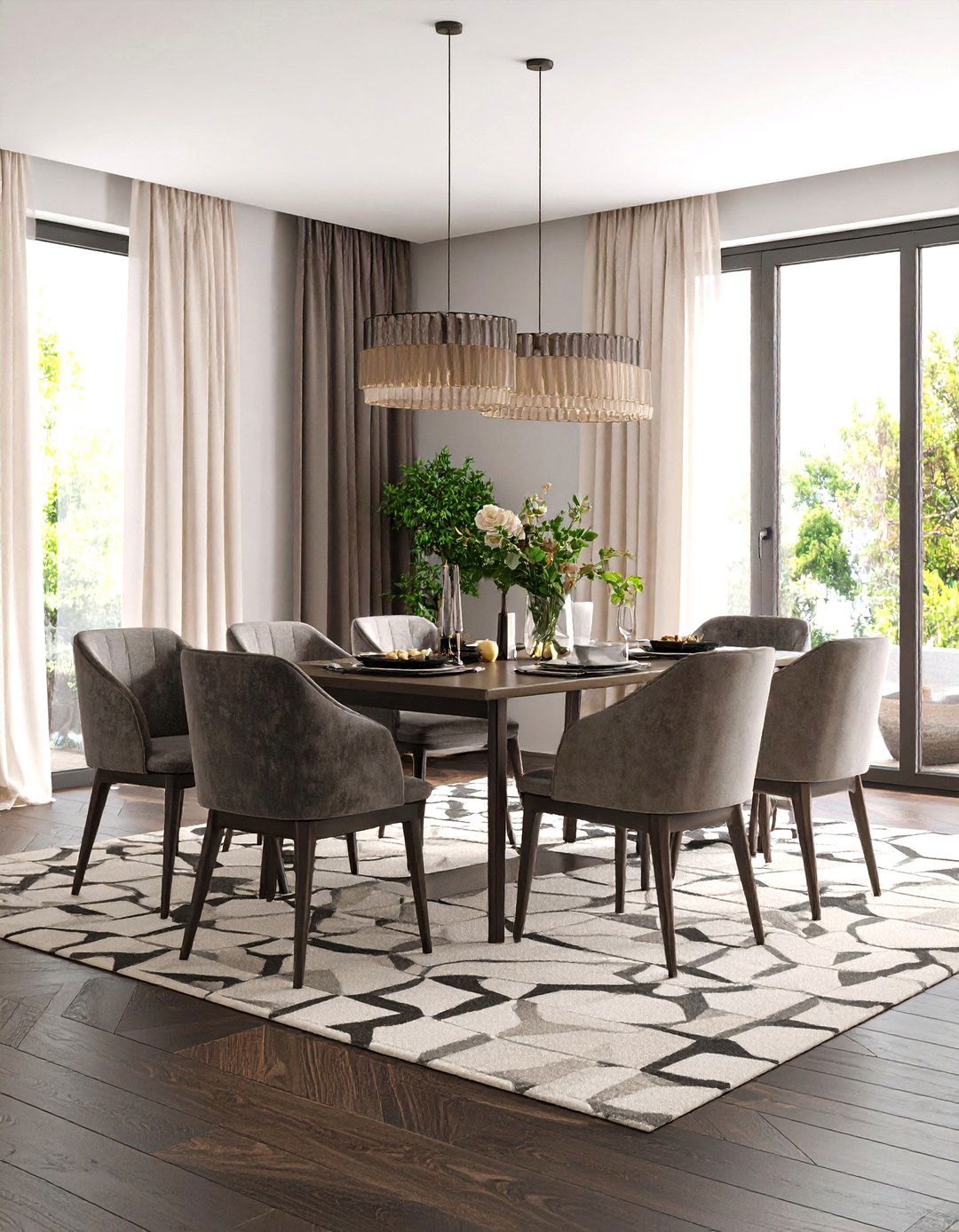
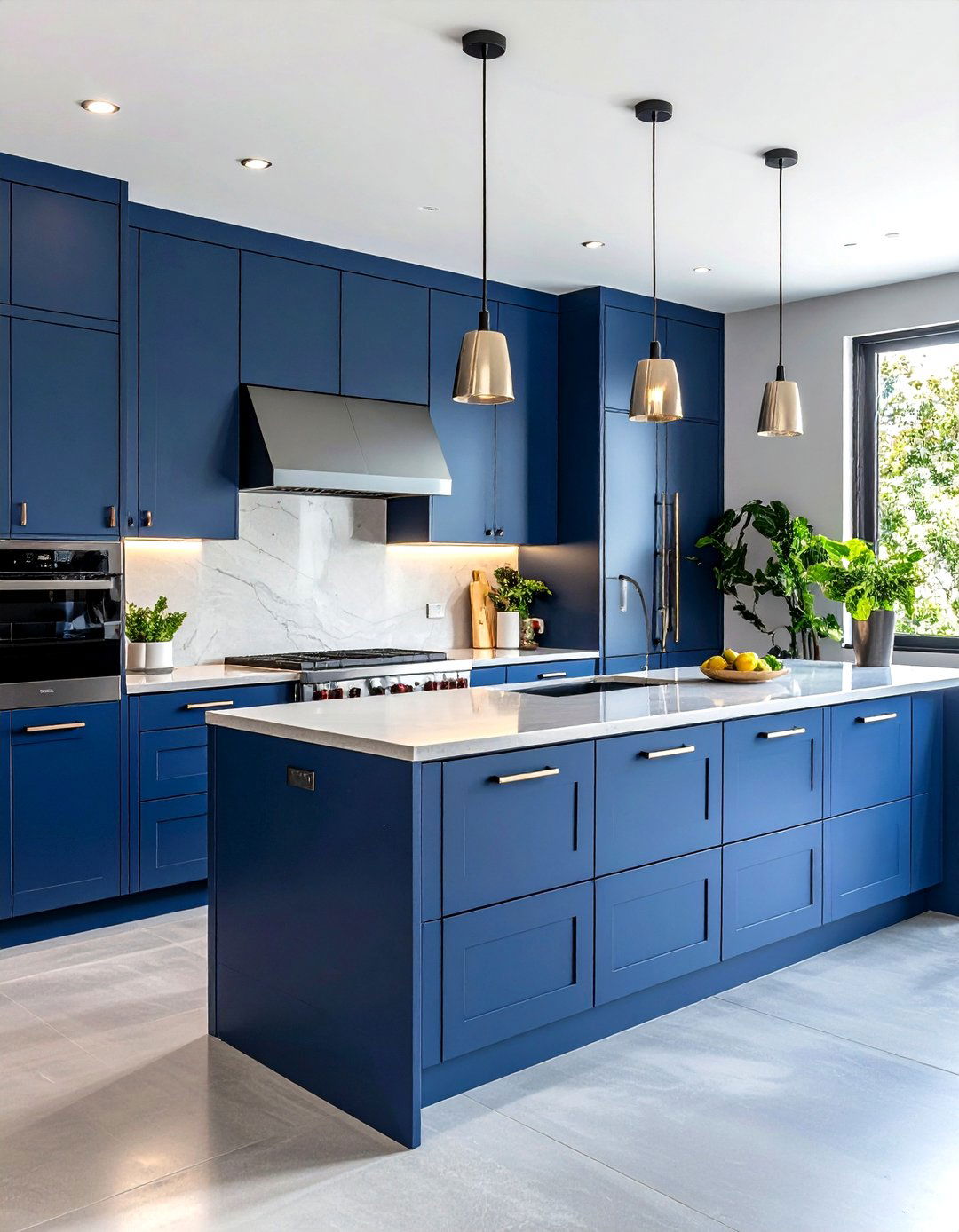
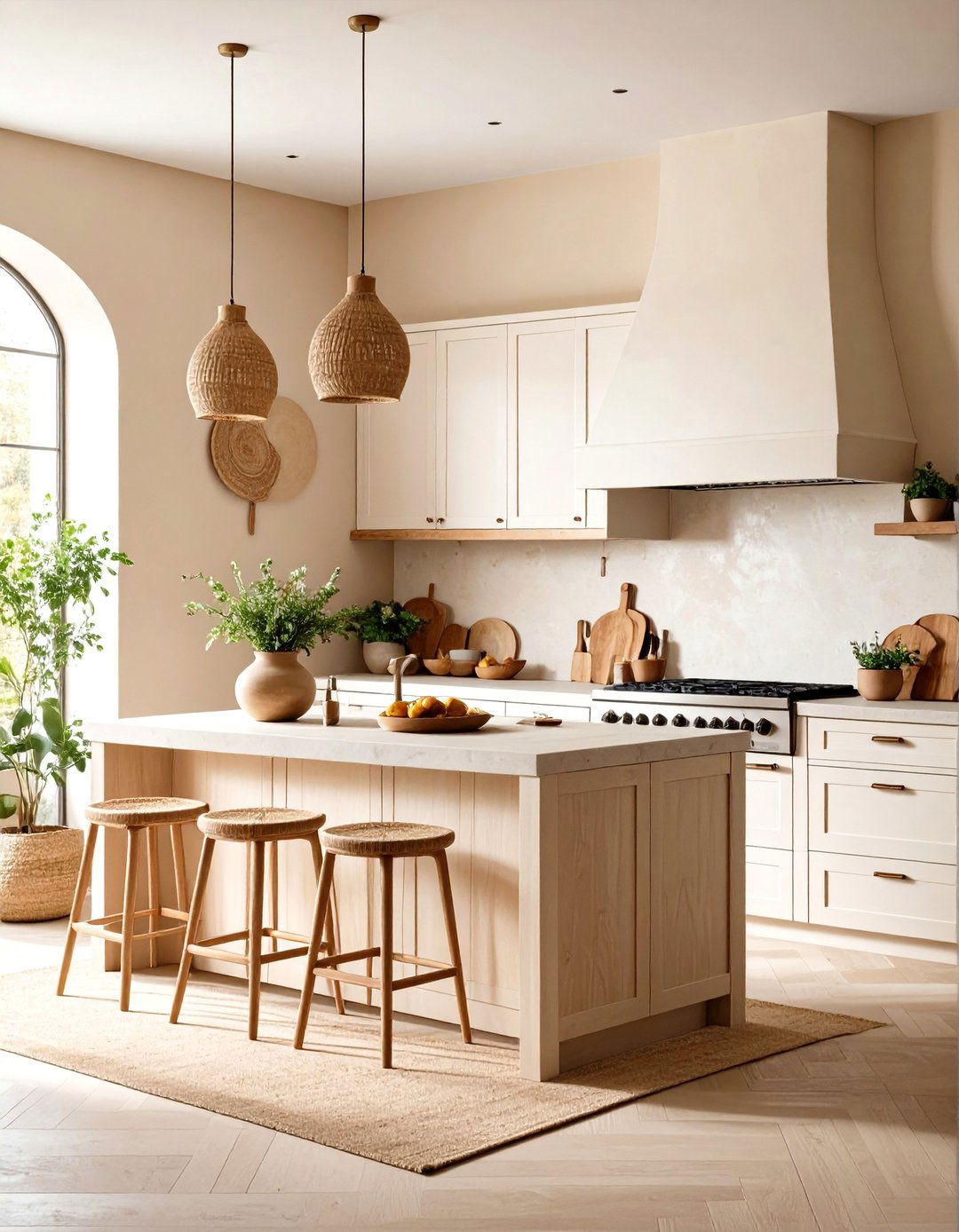
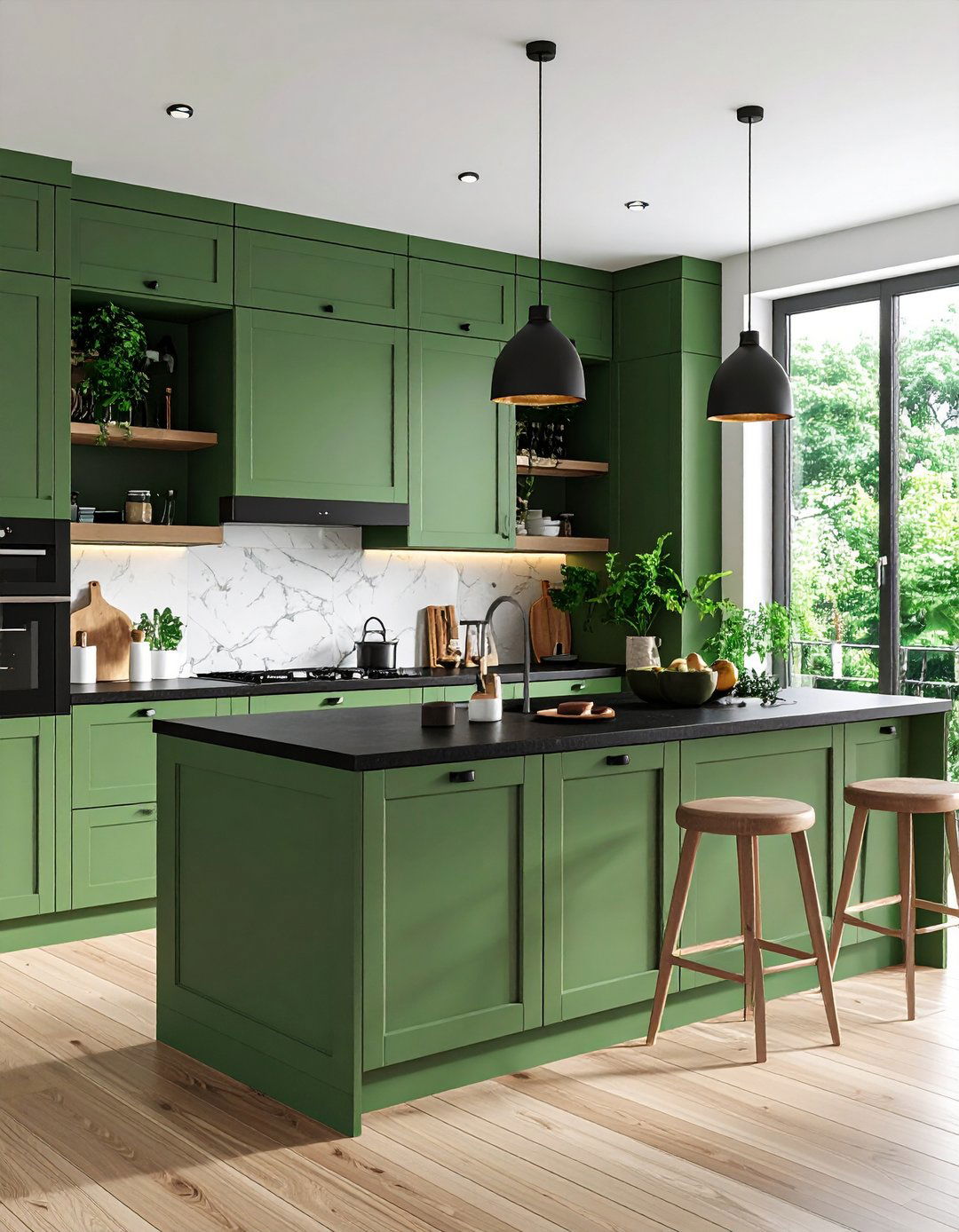

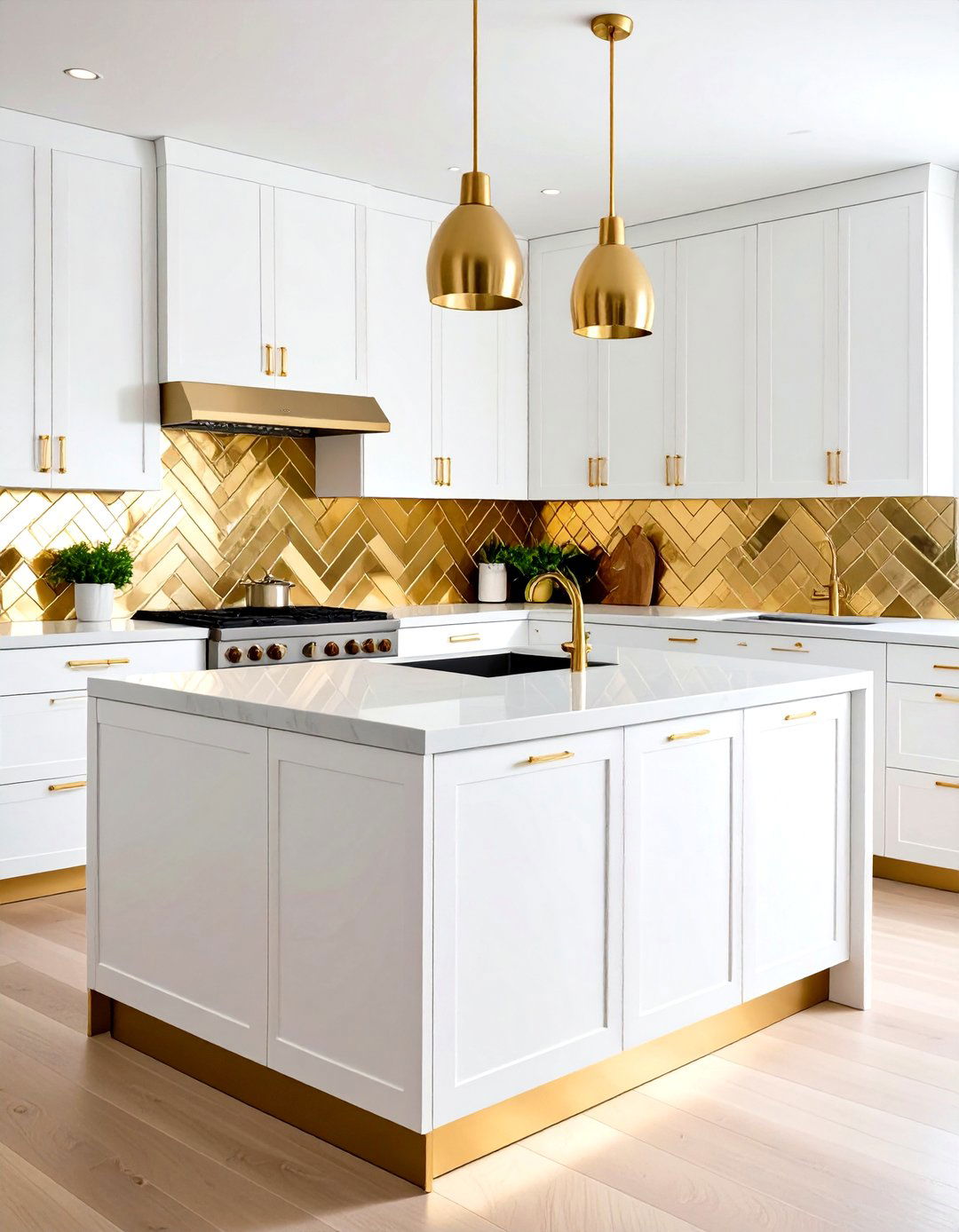
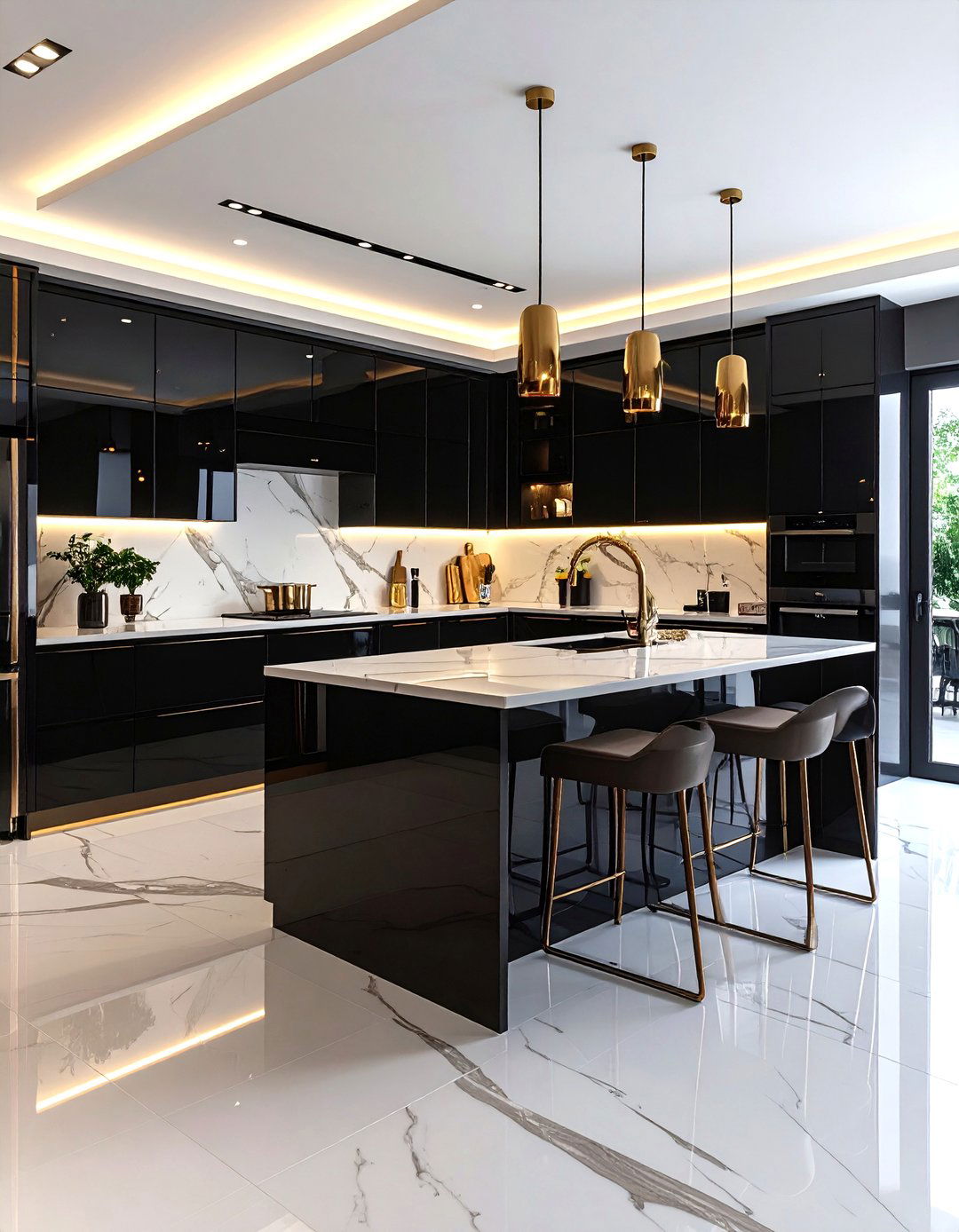
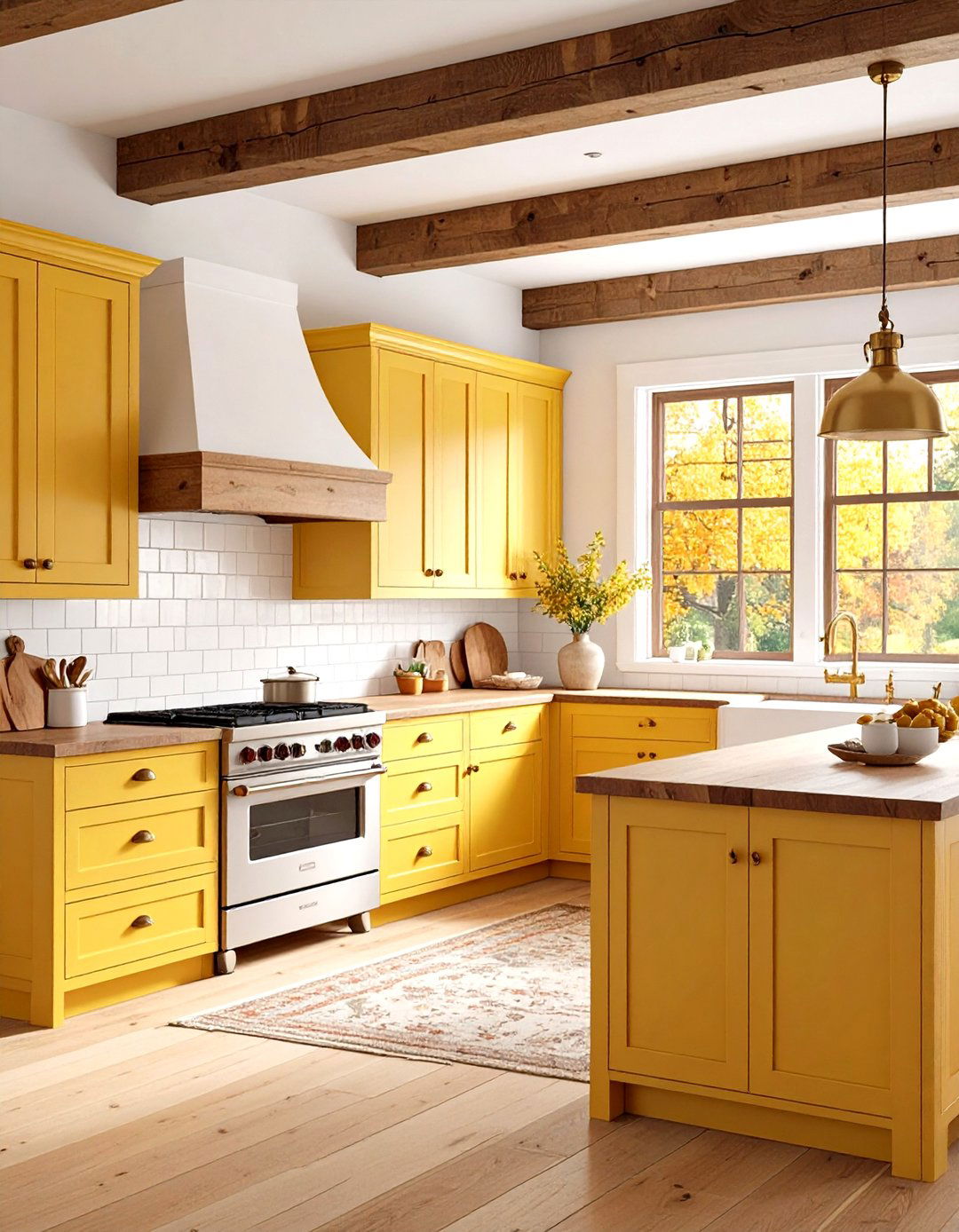
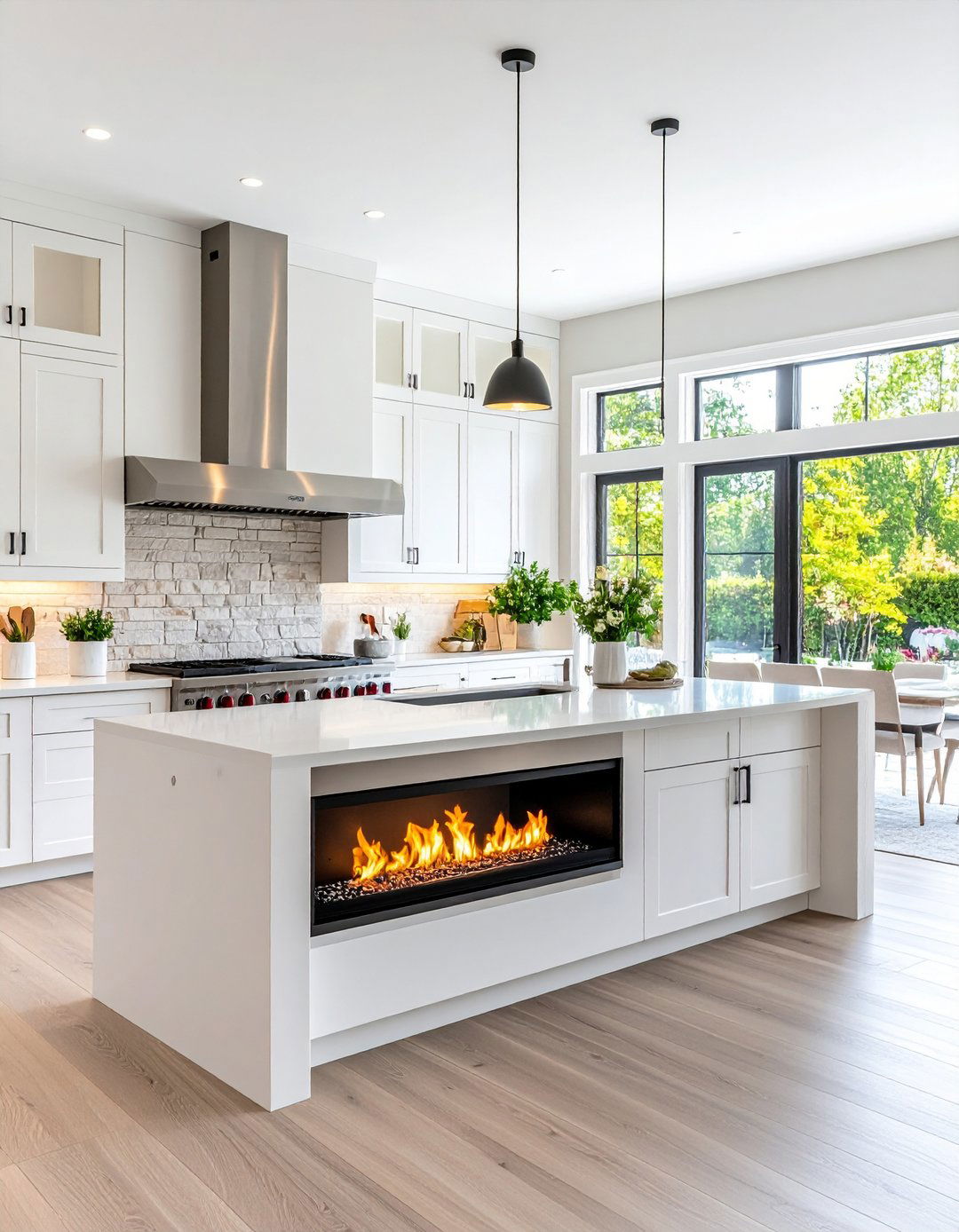
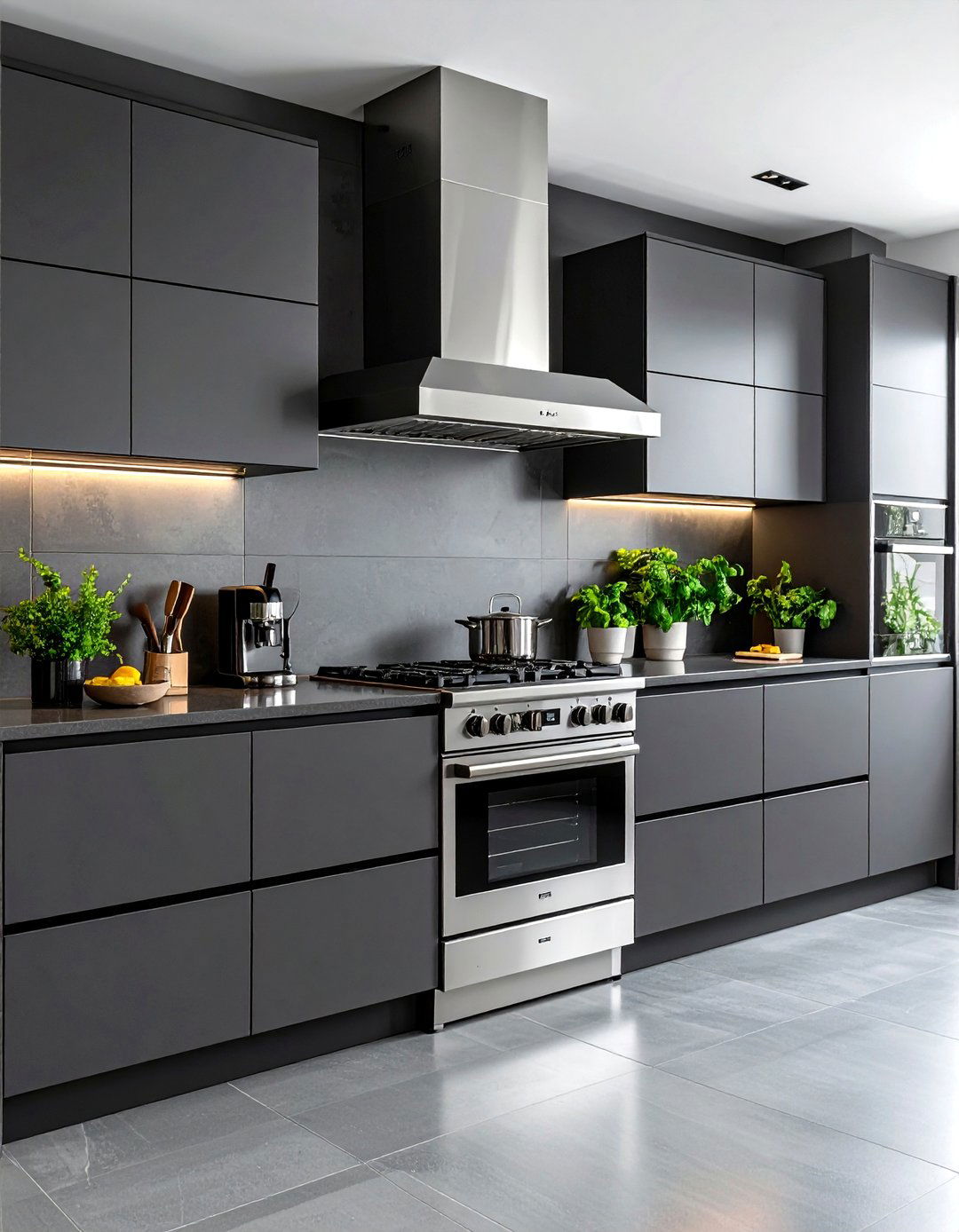
Leave a Reply